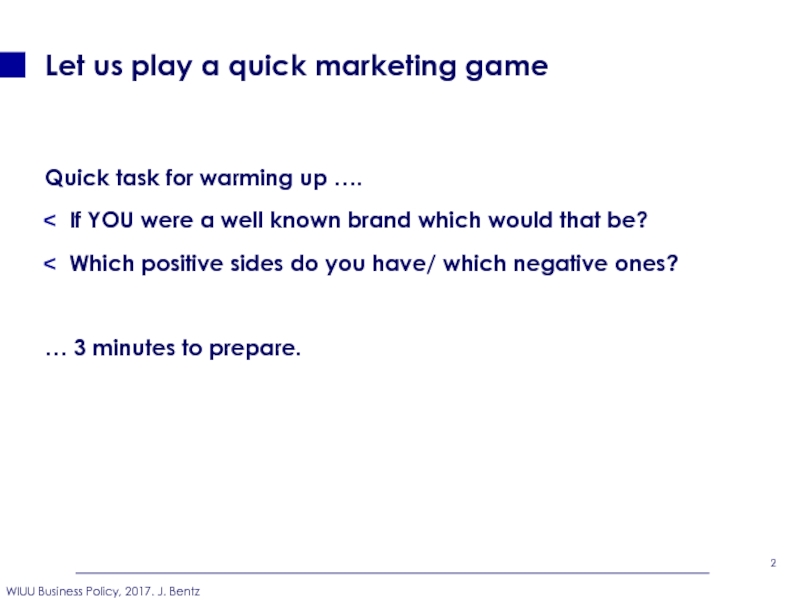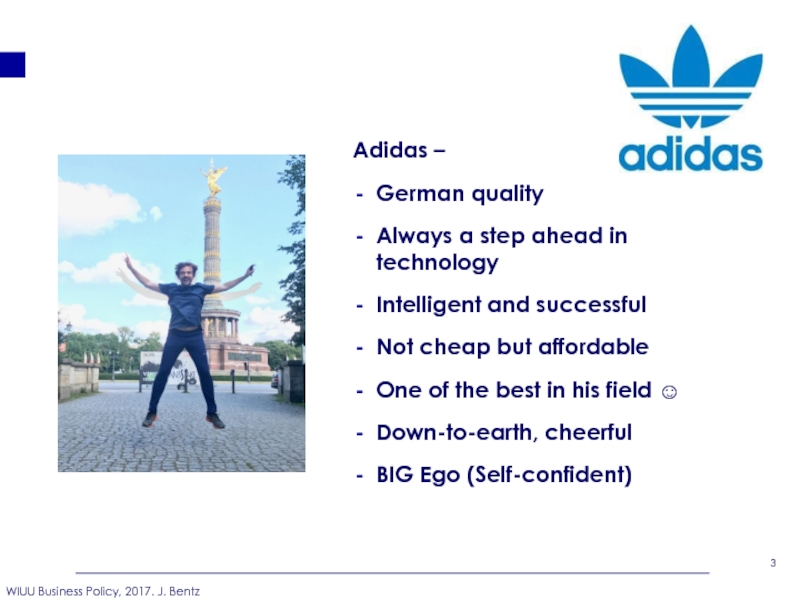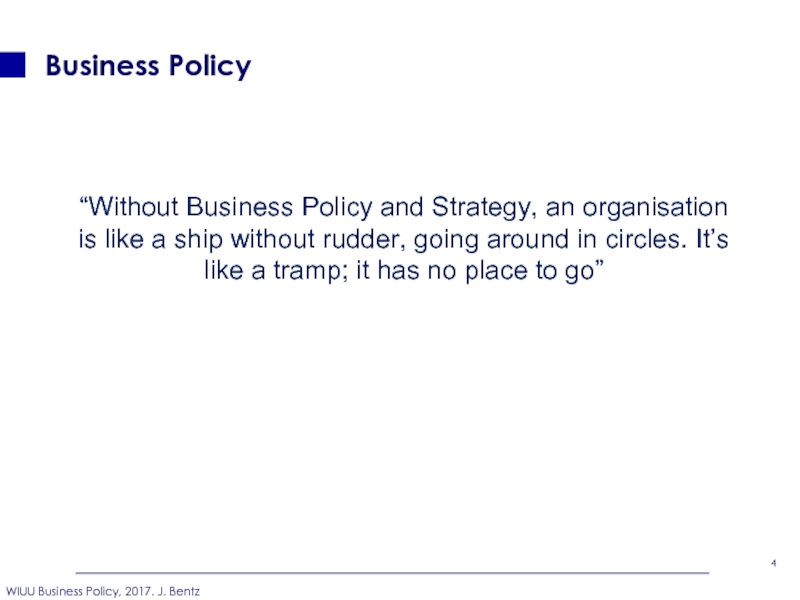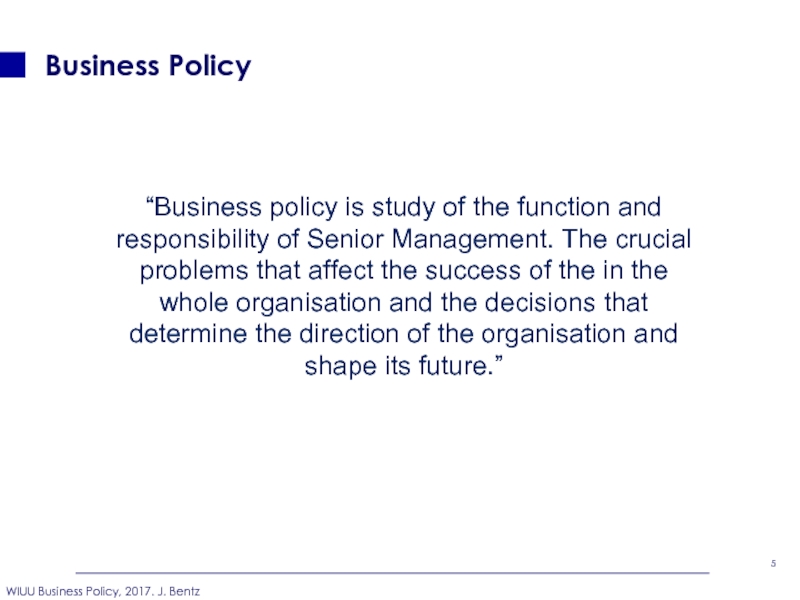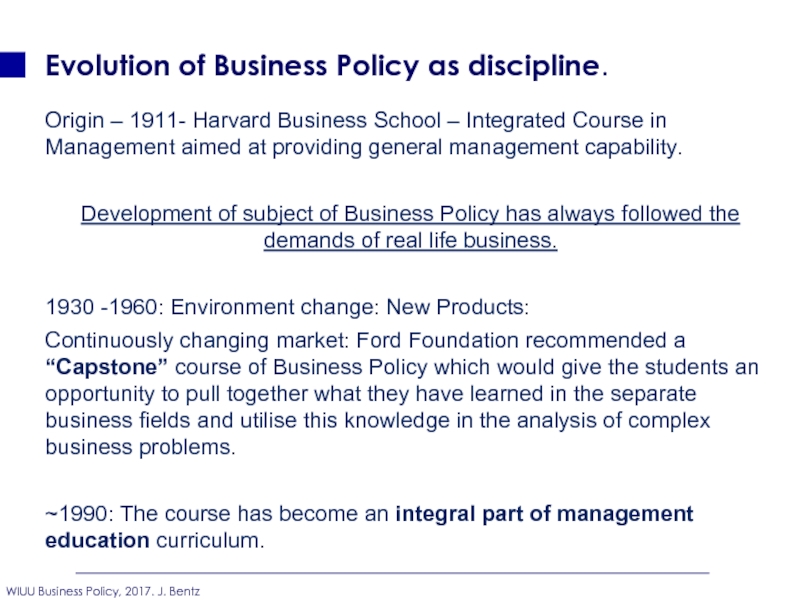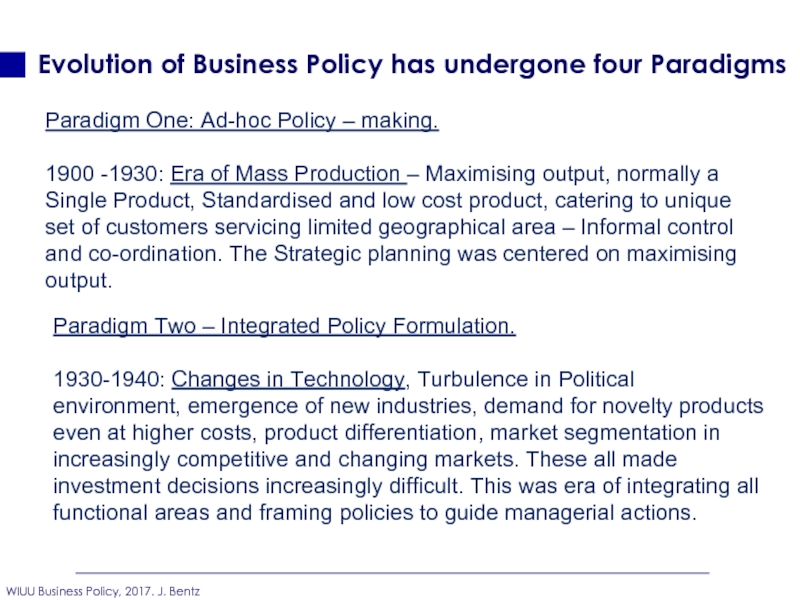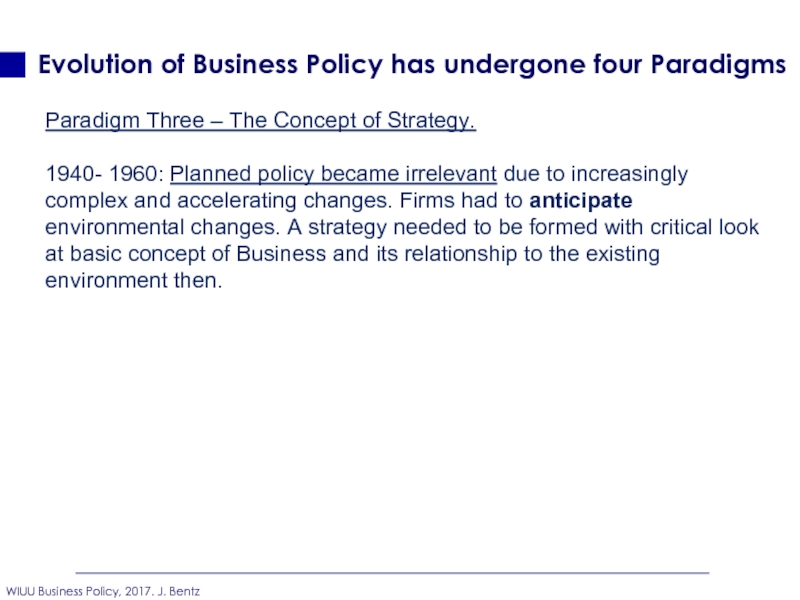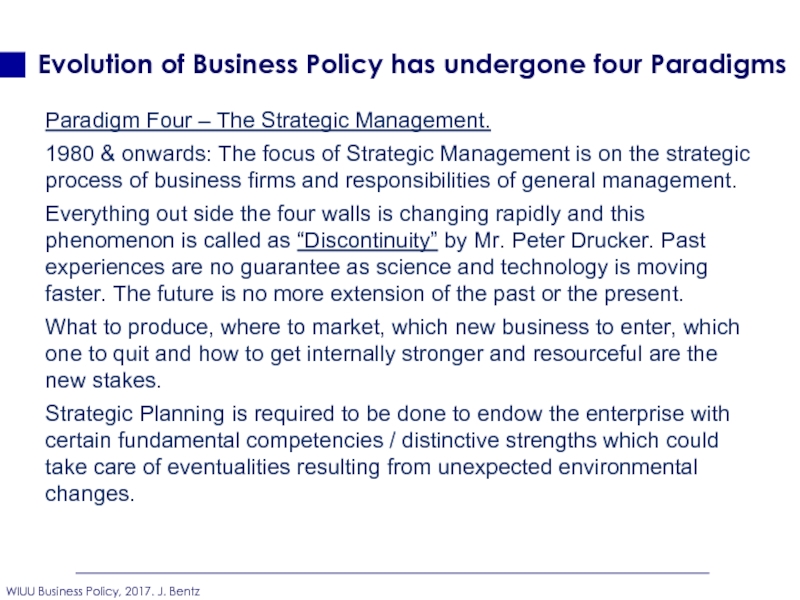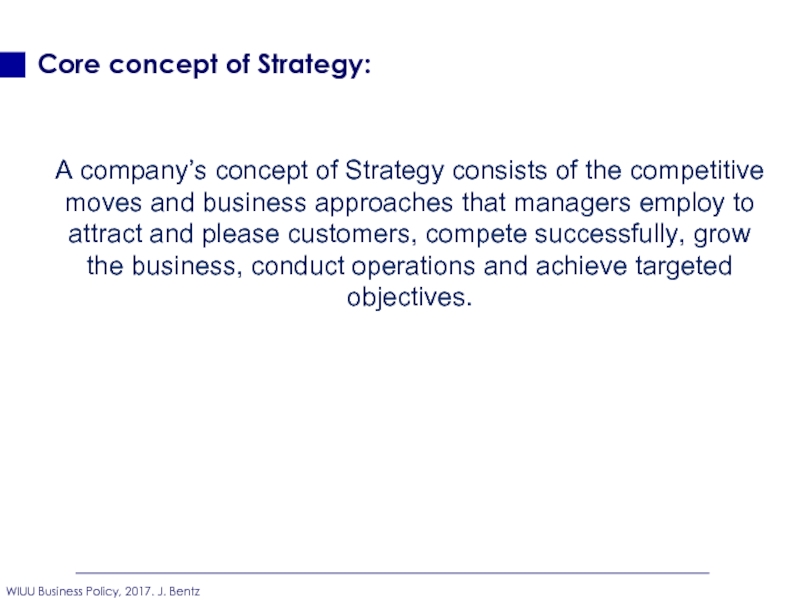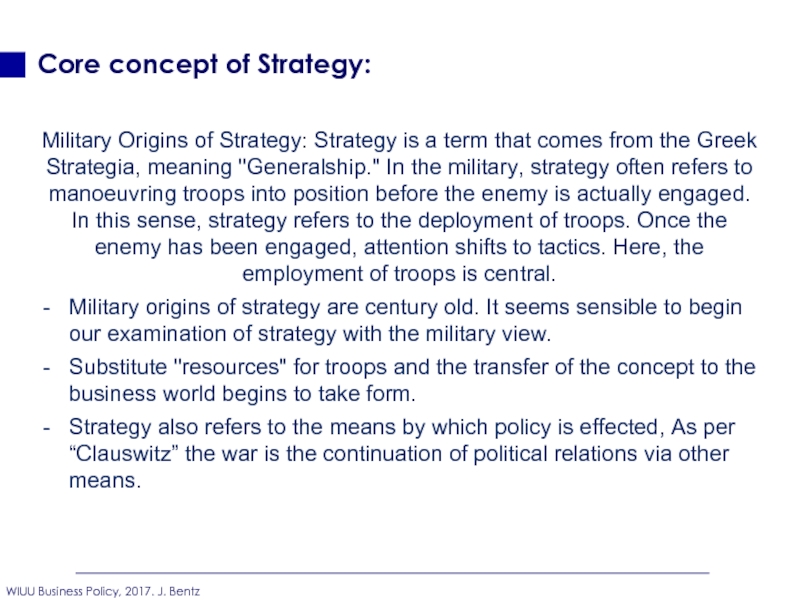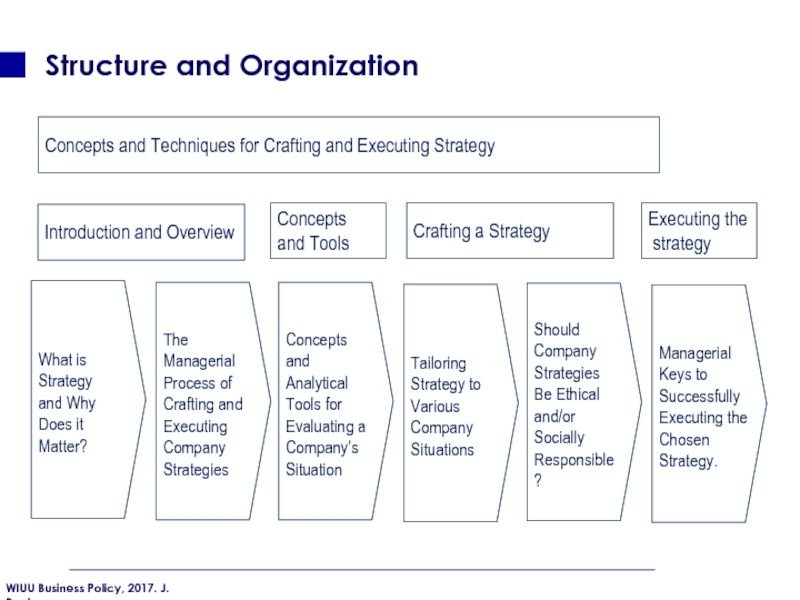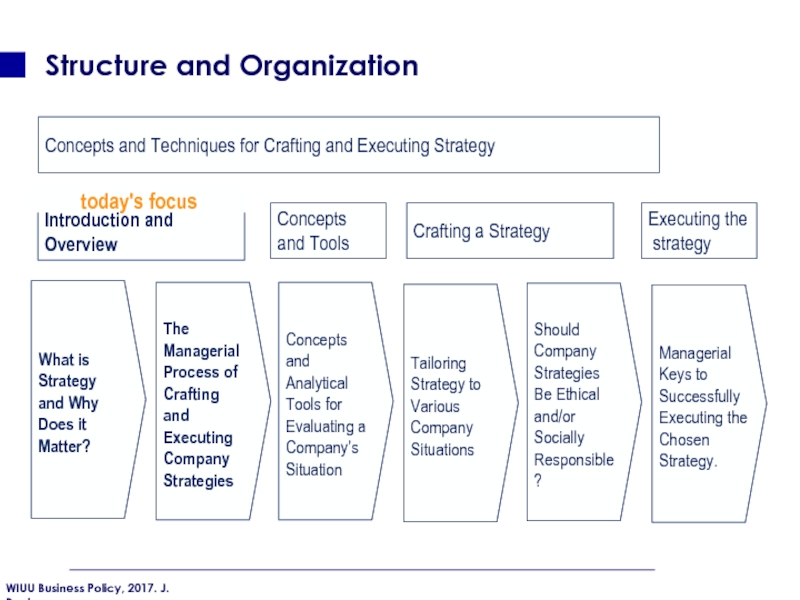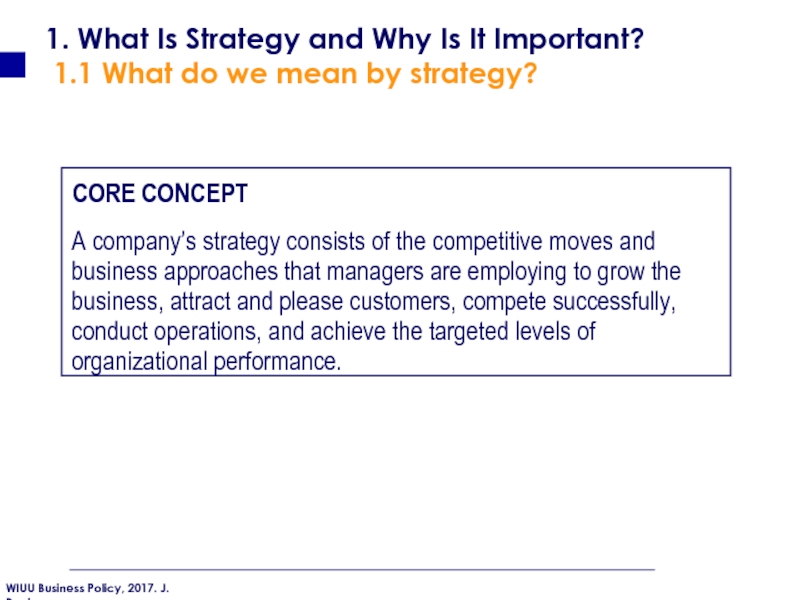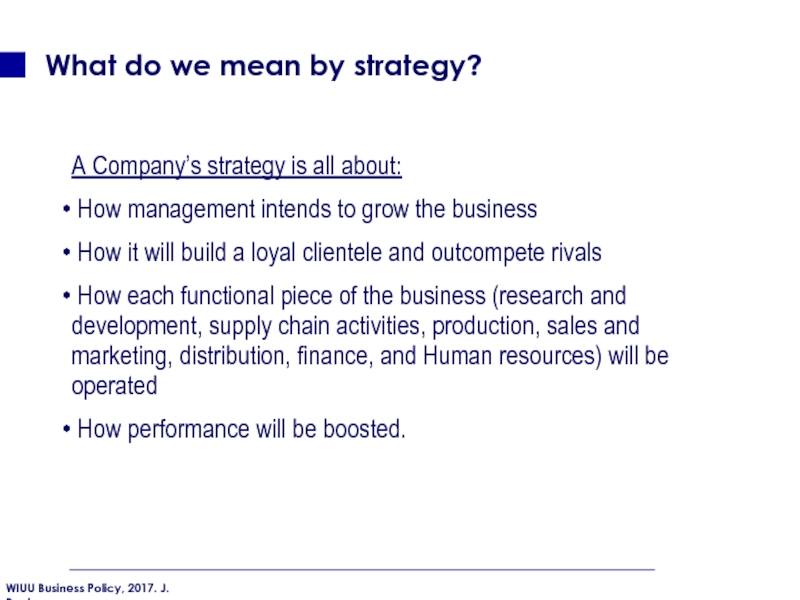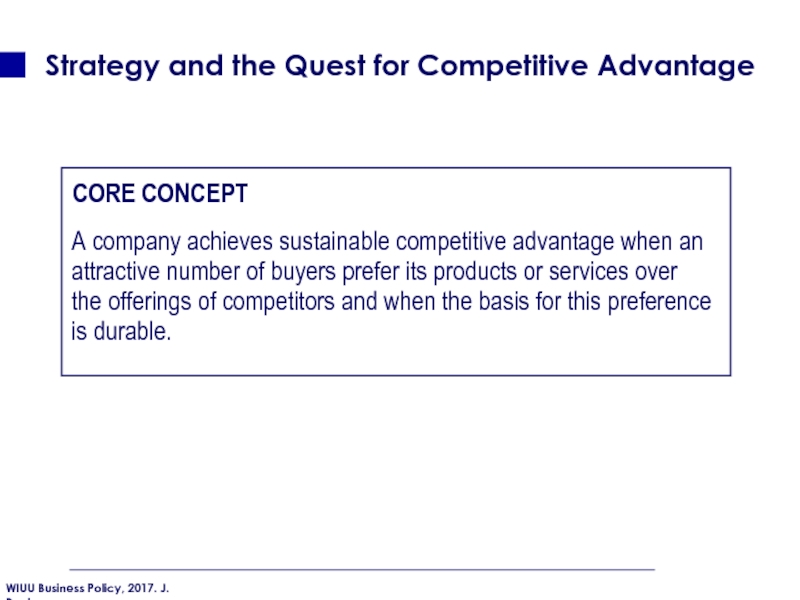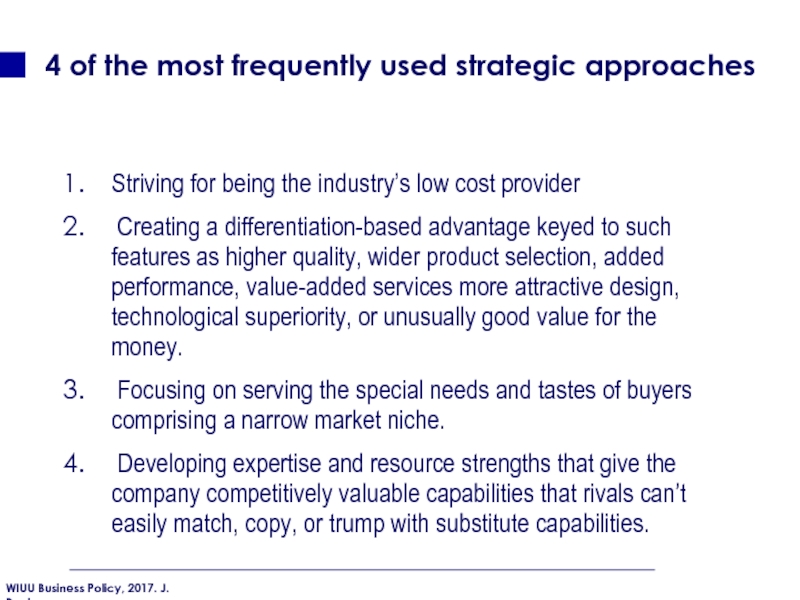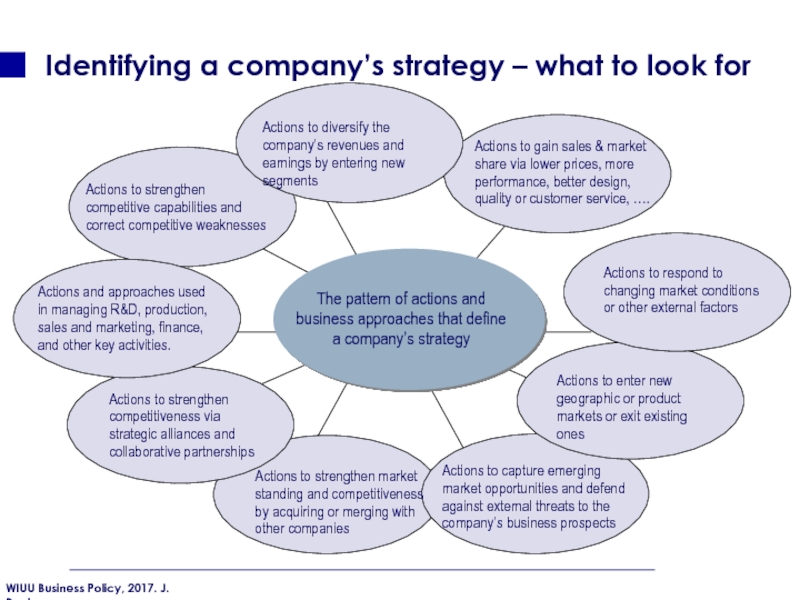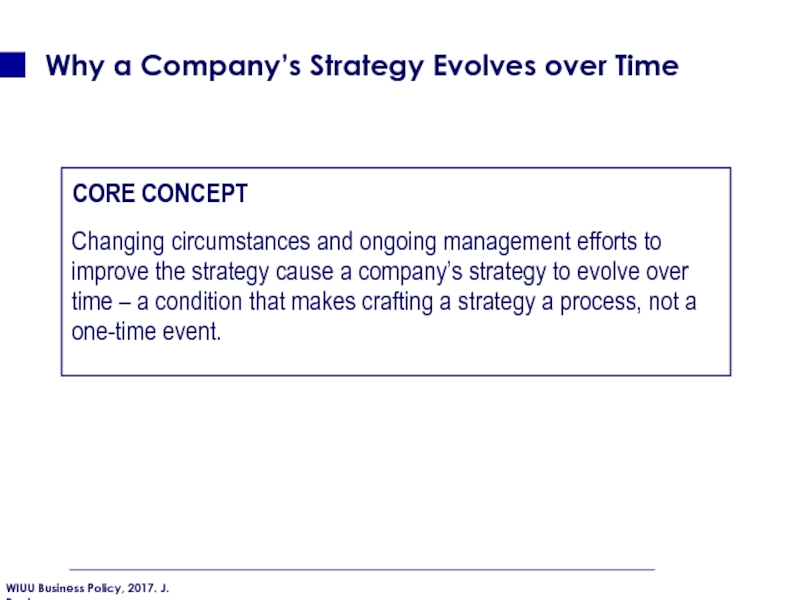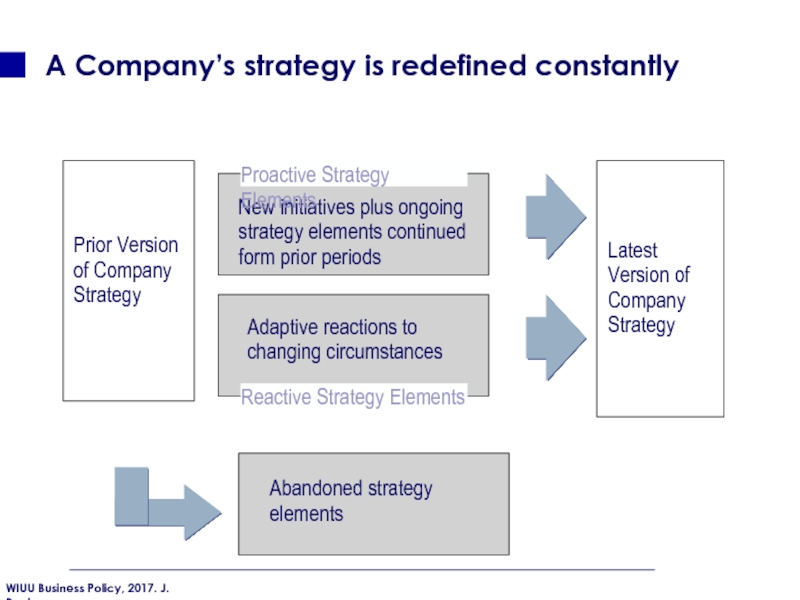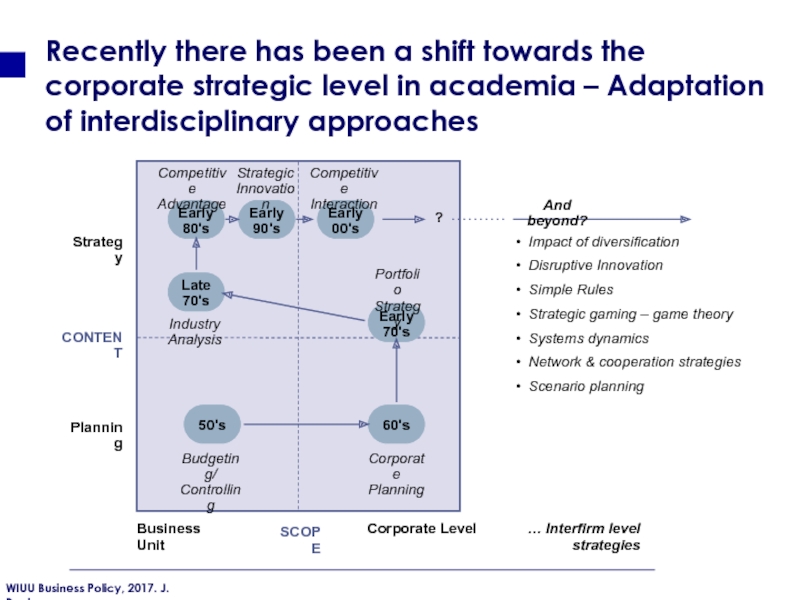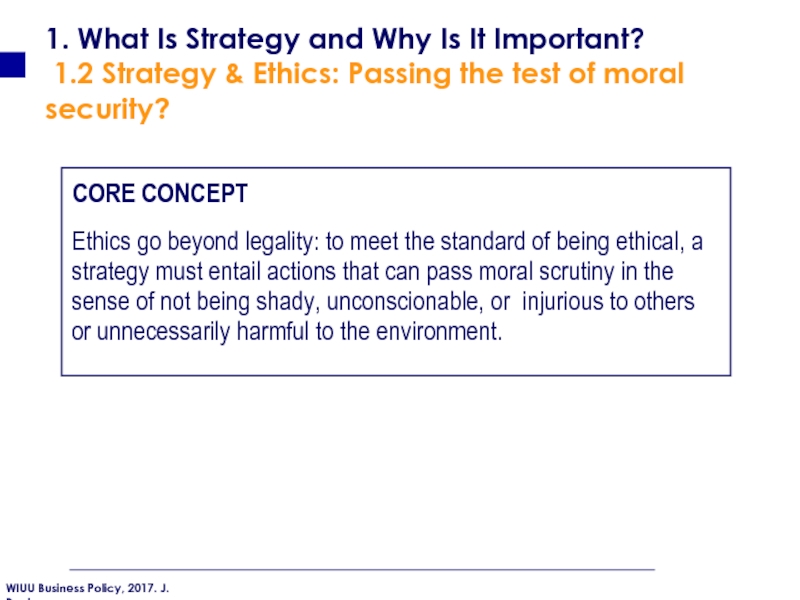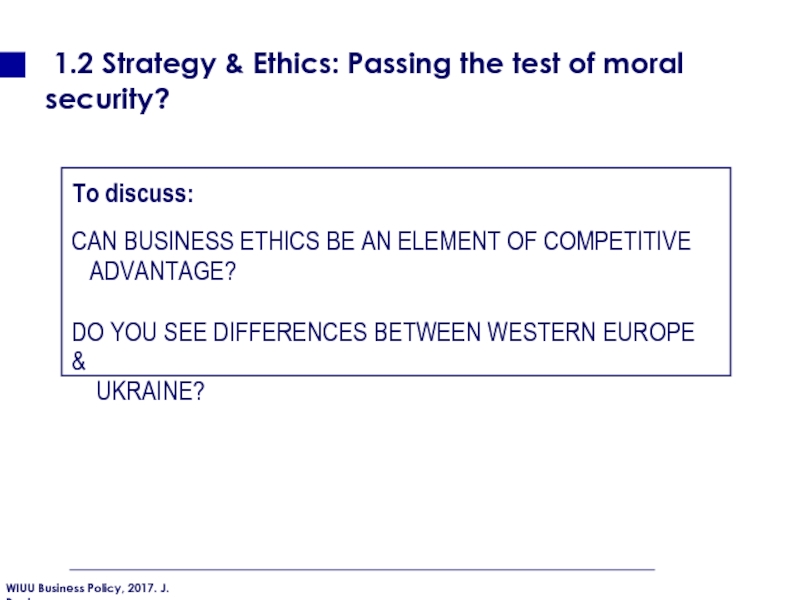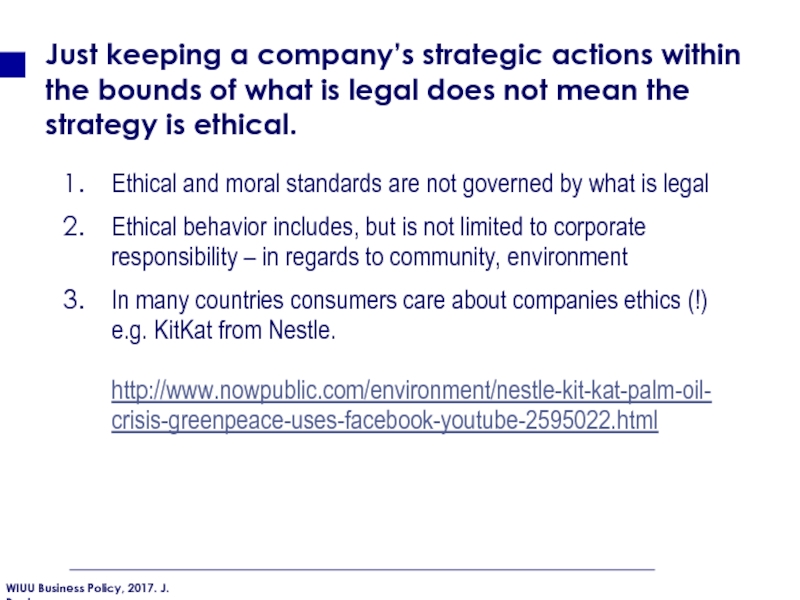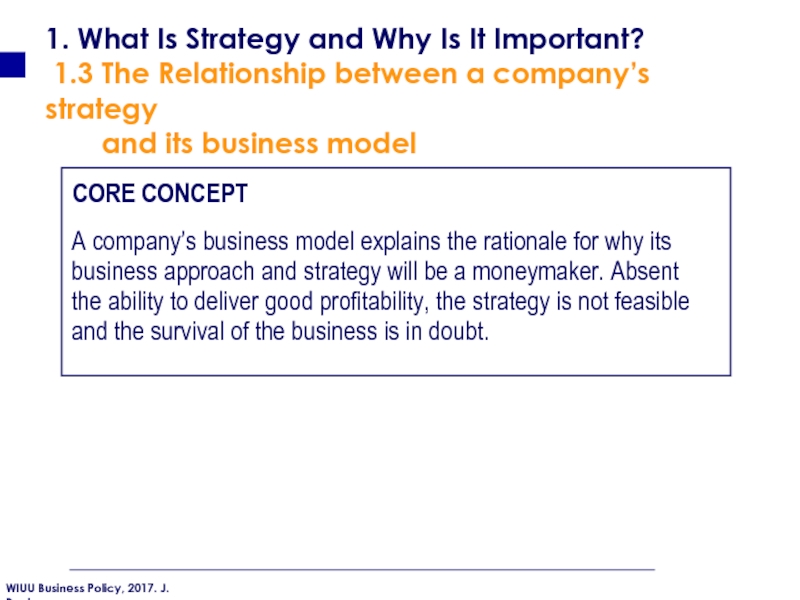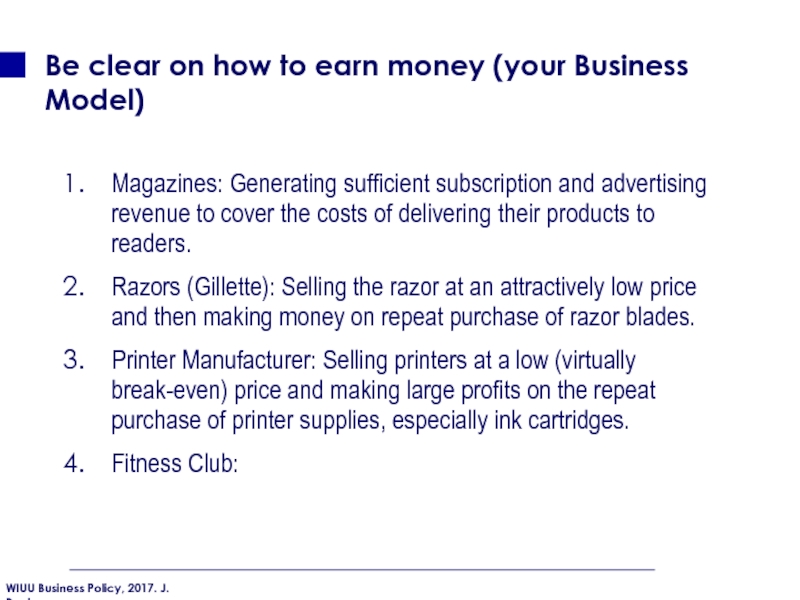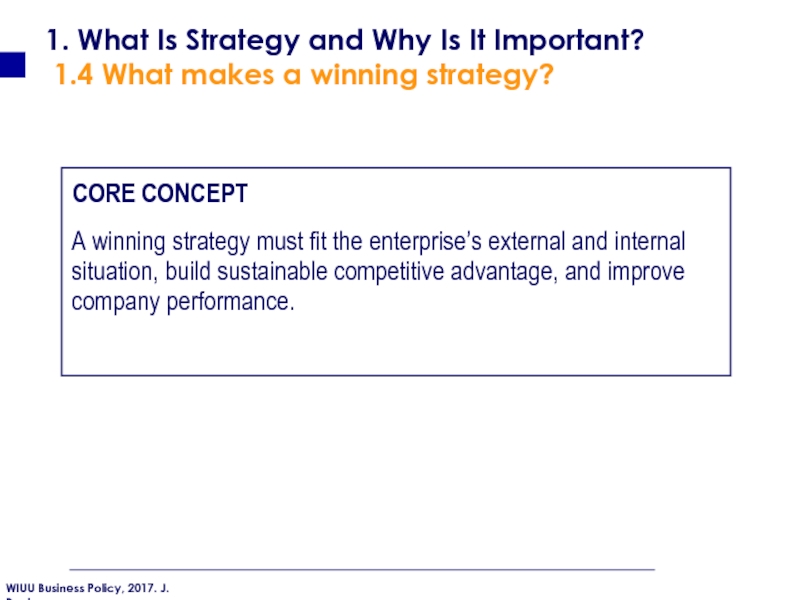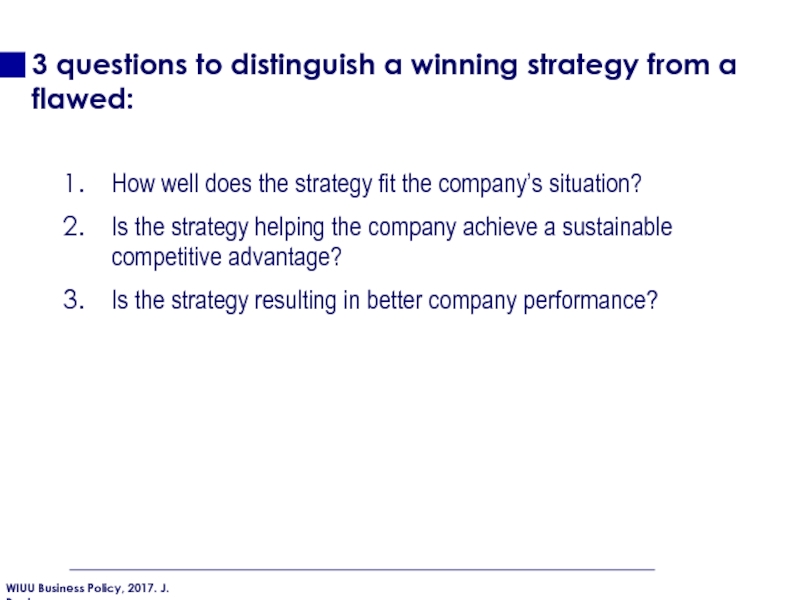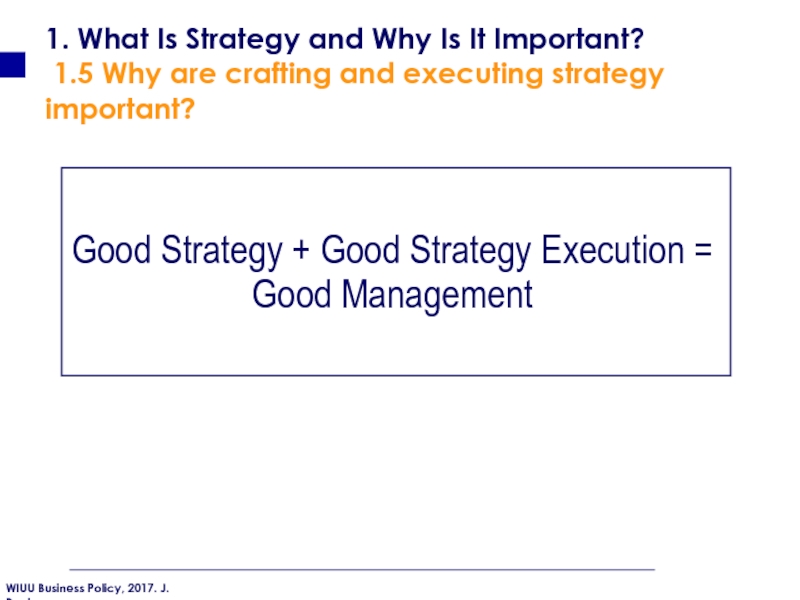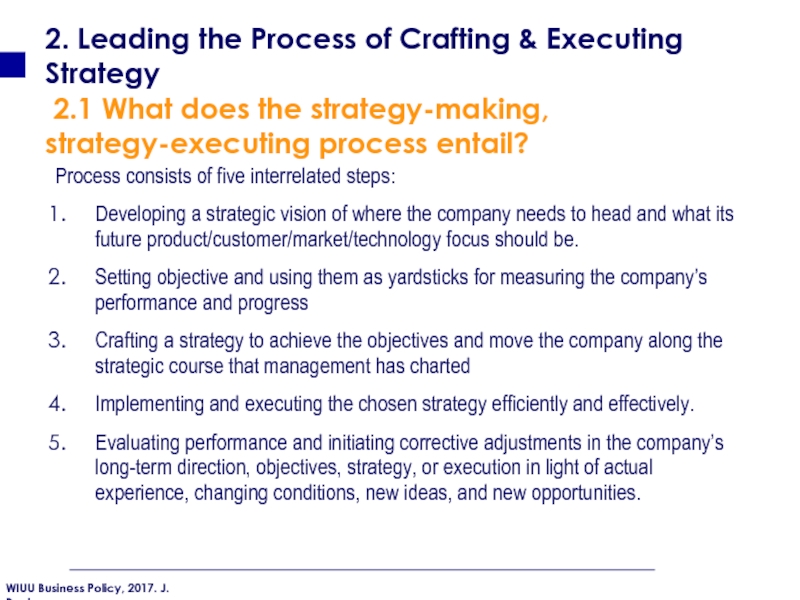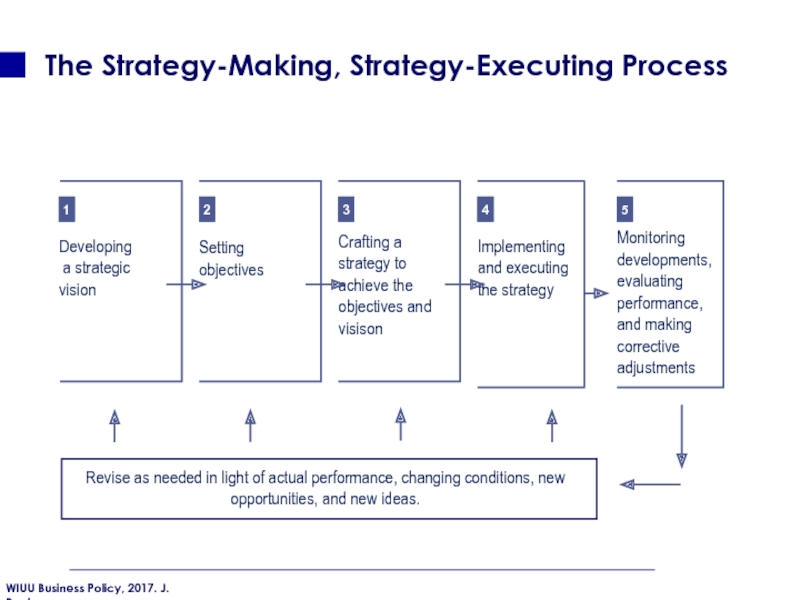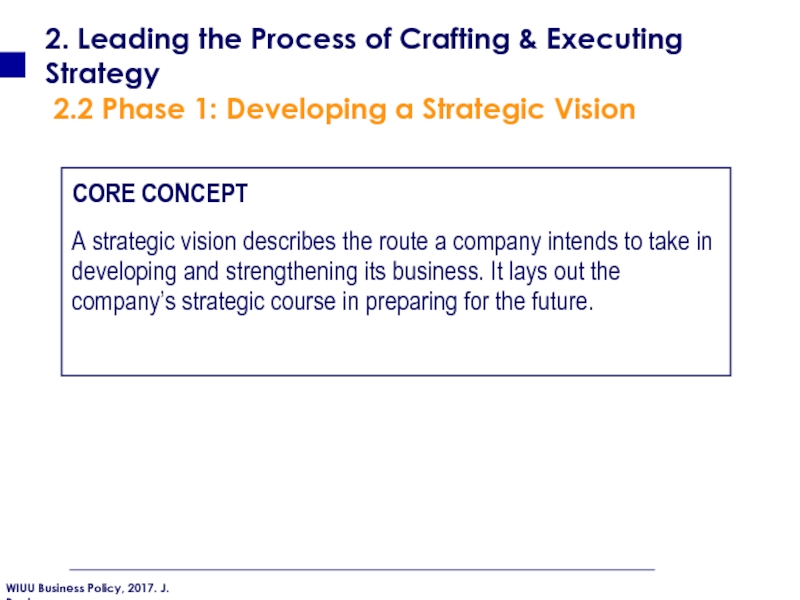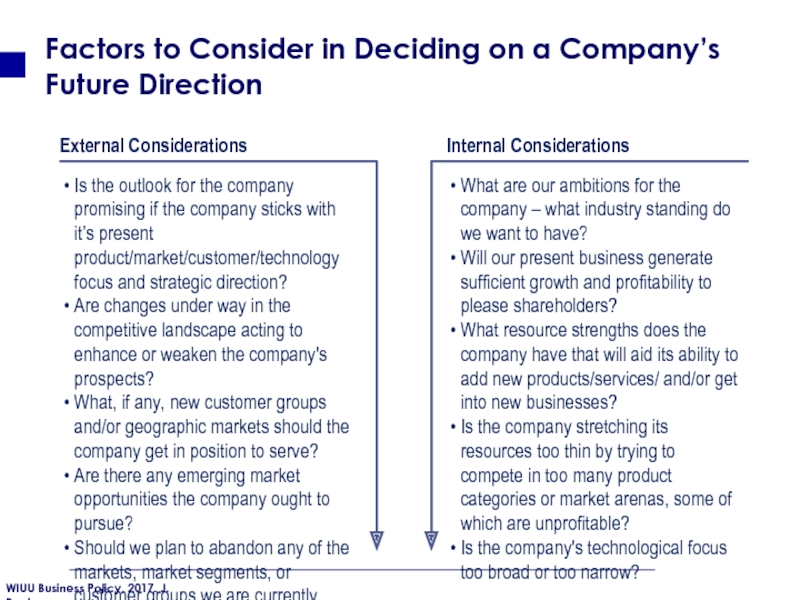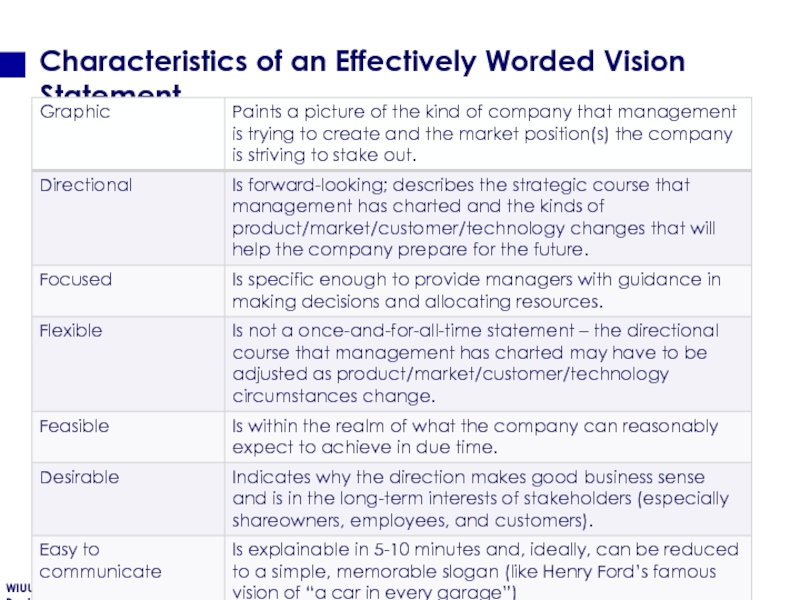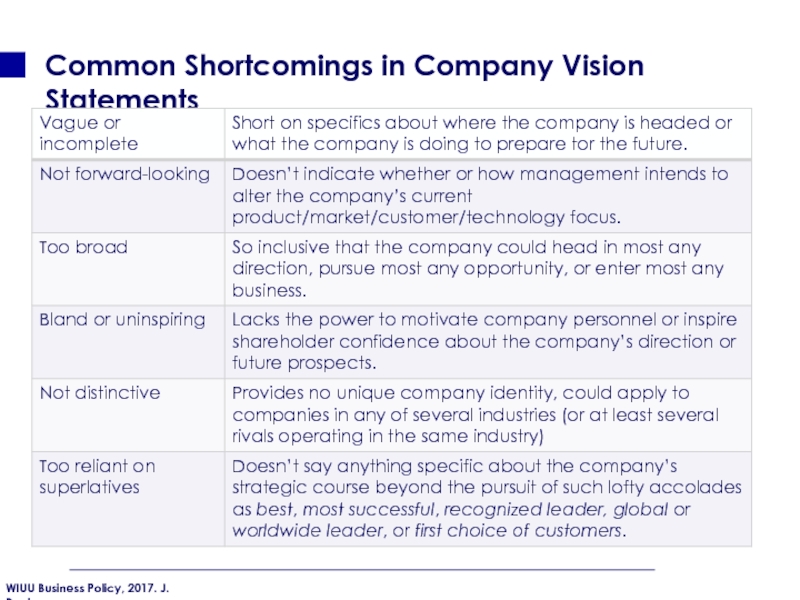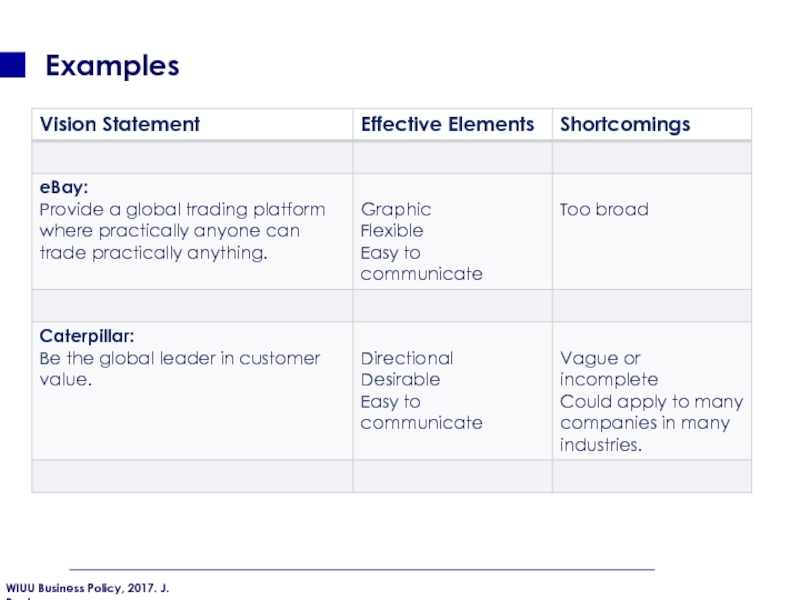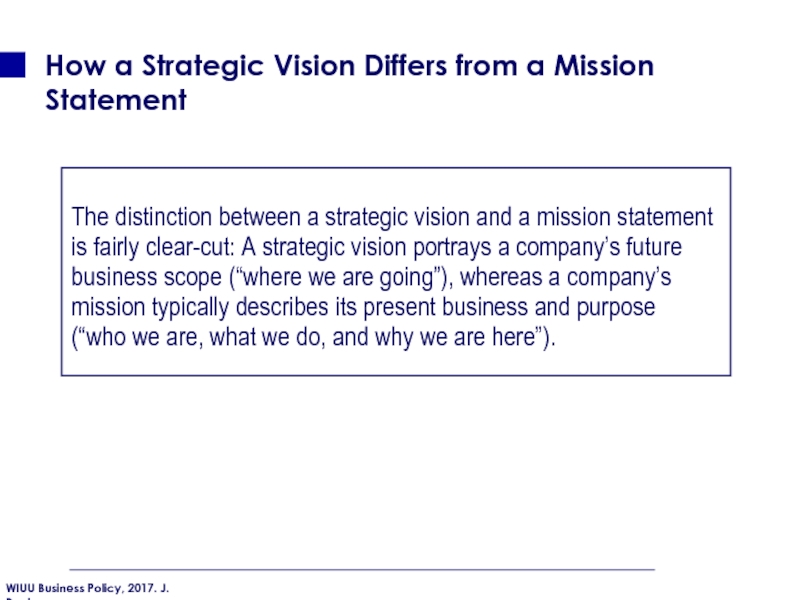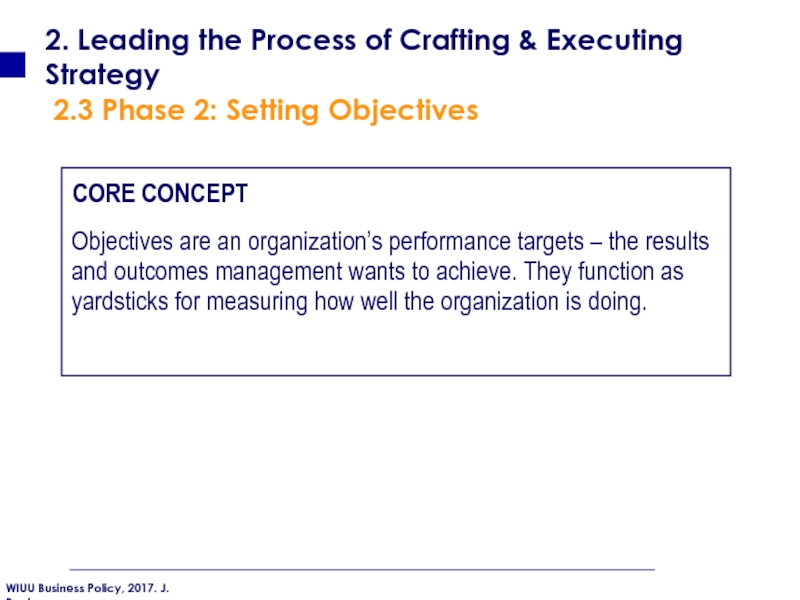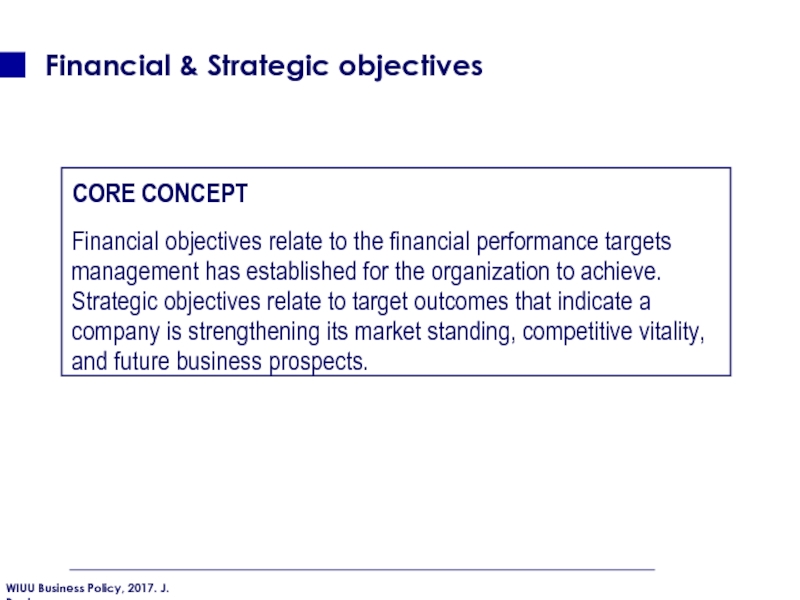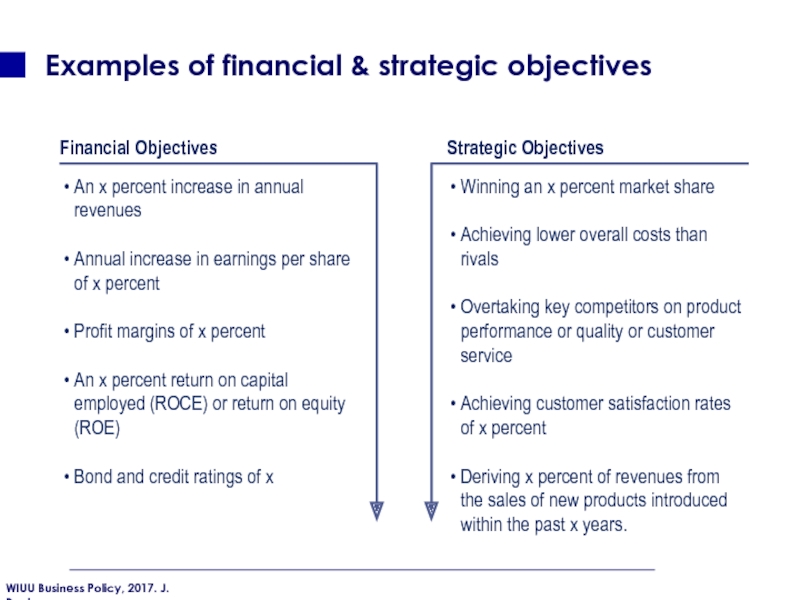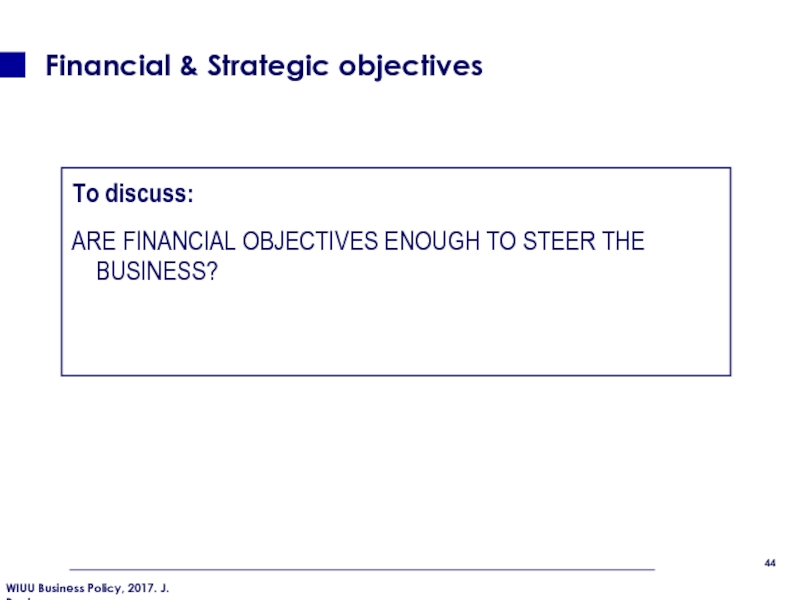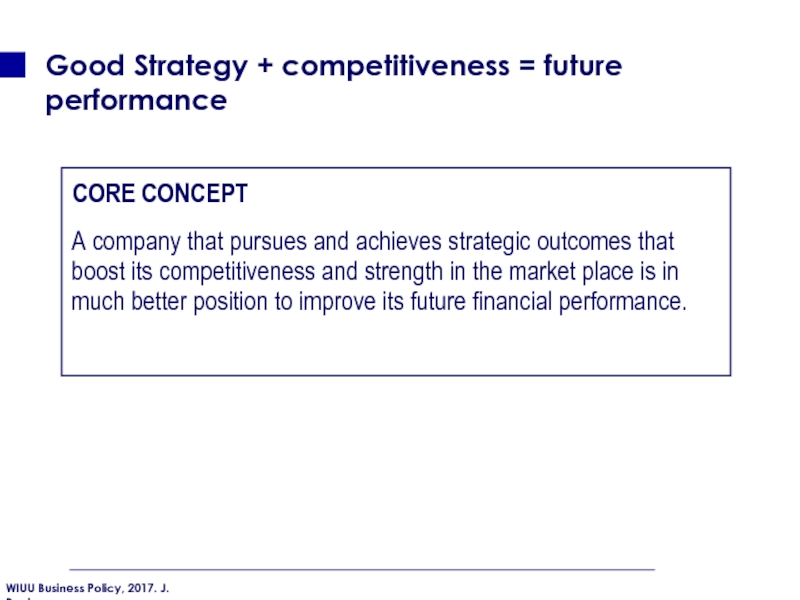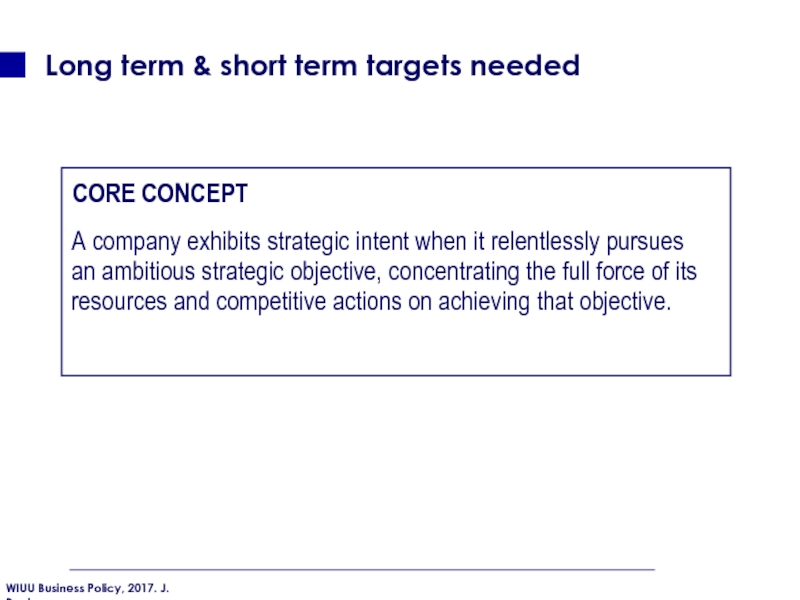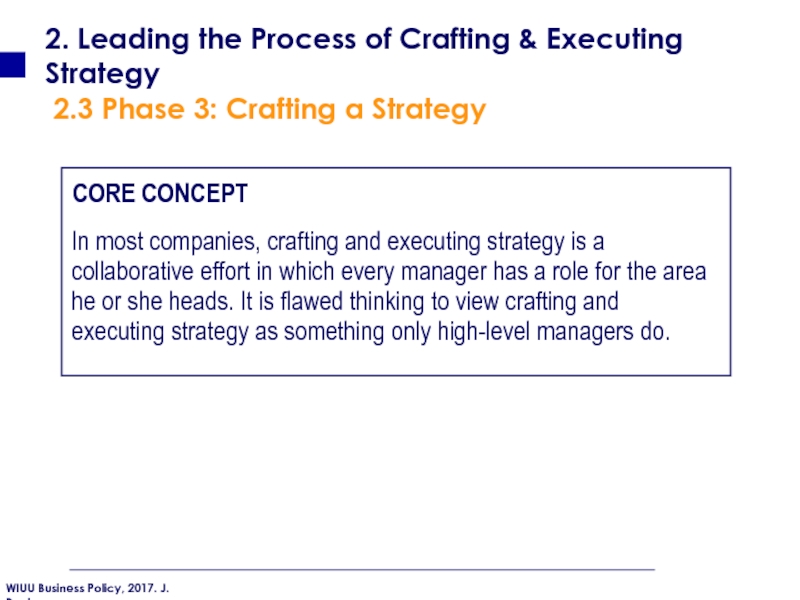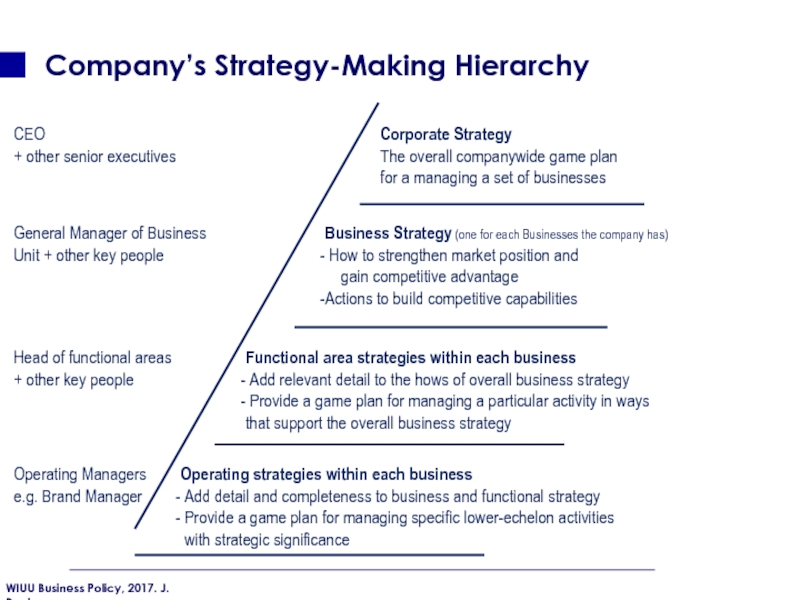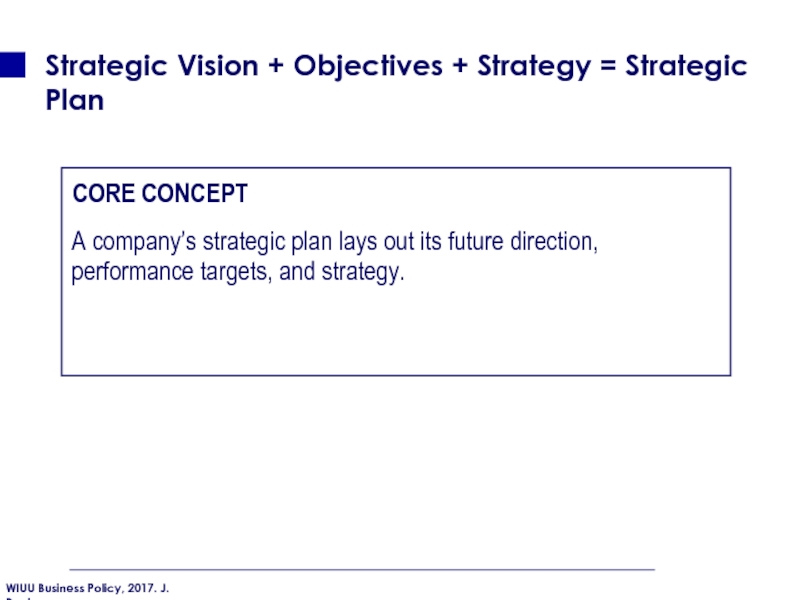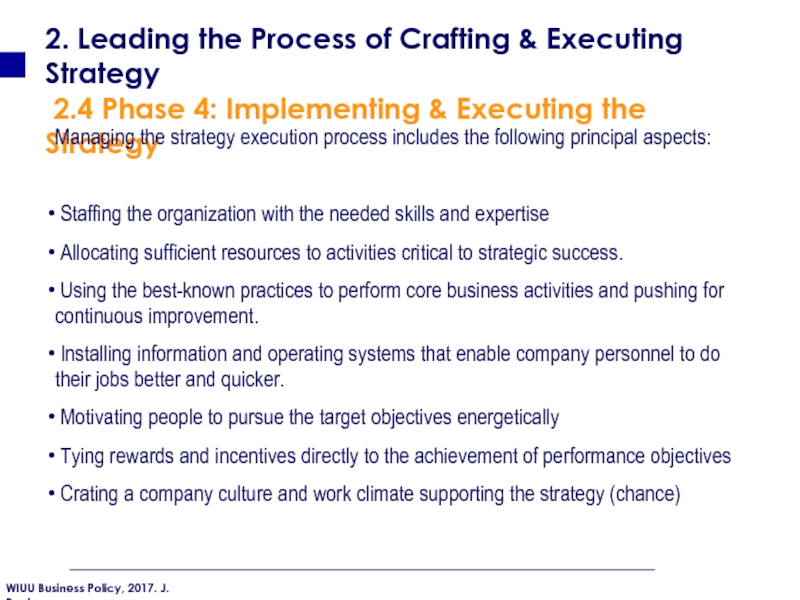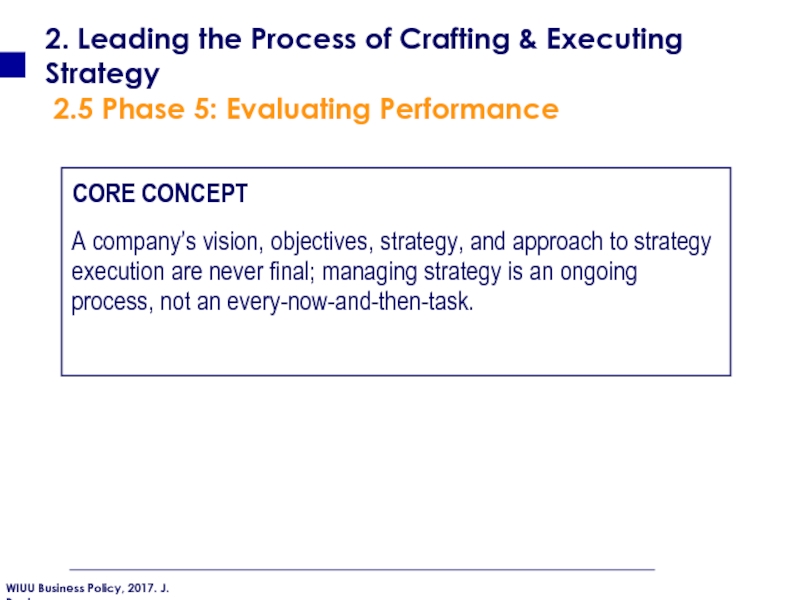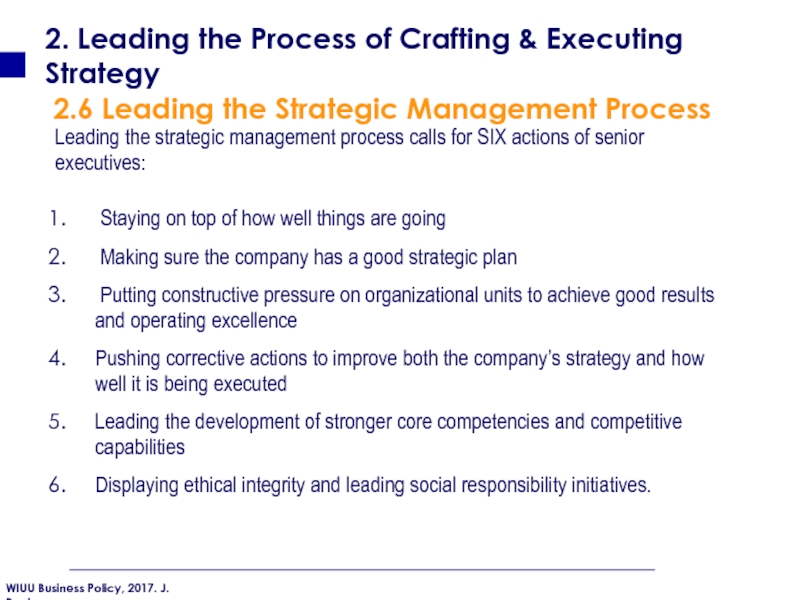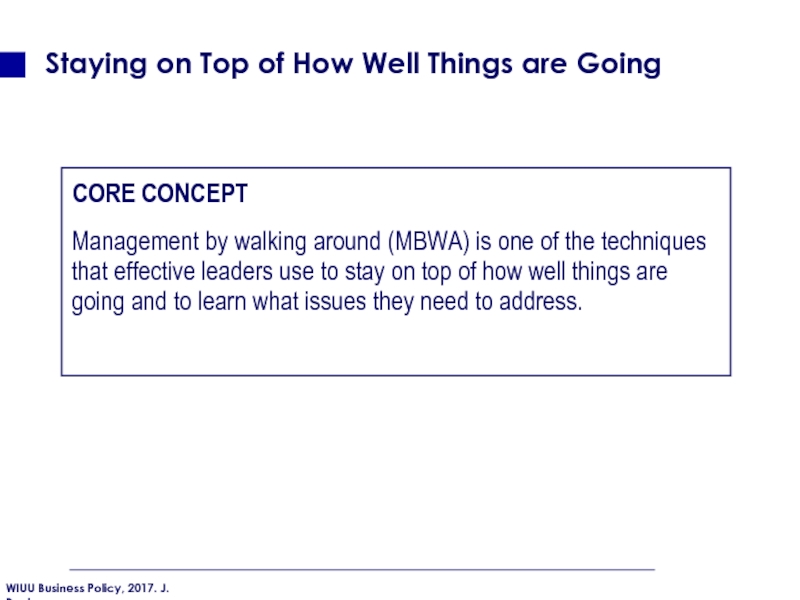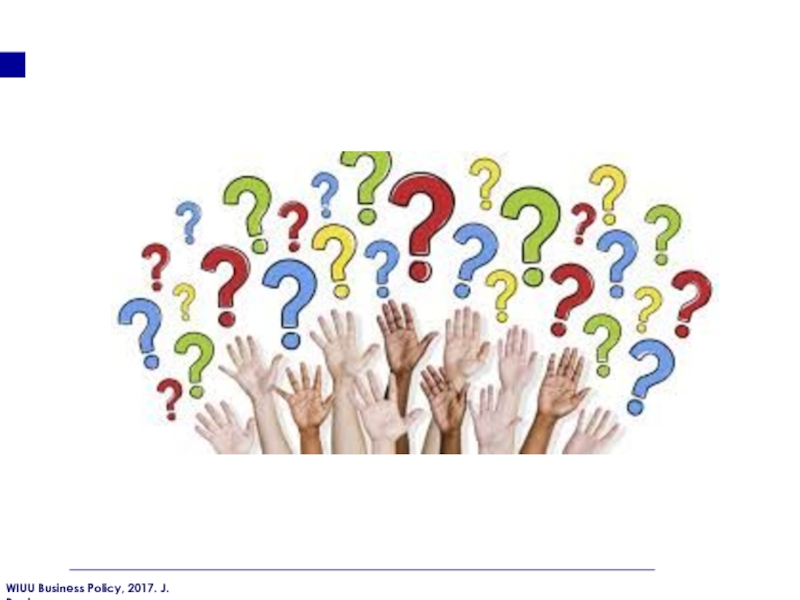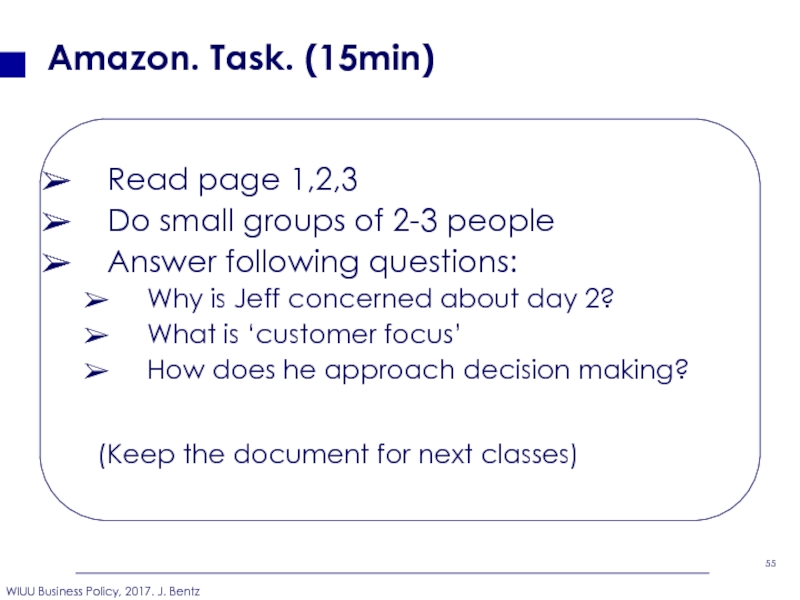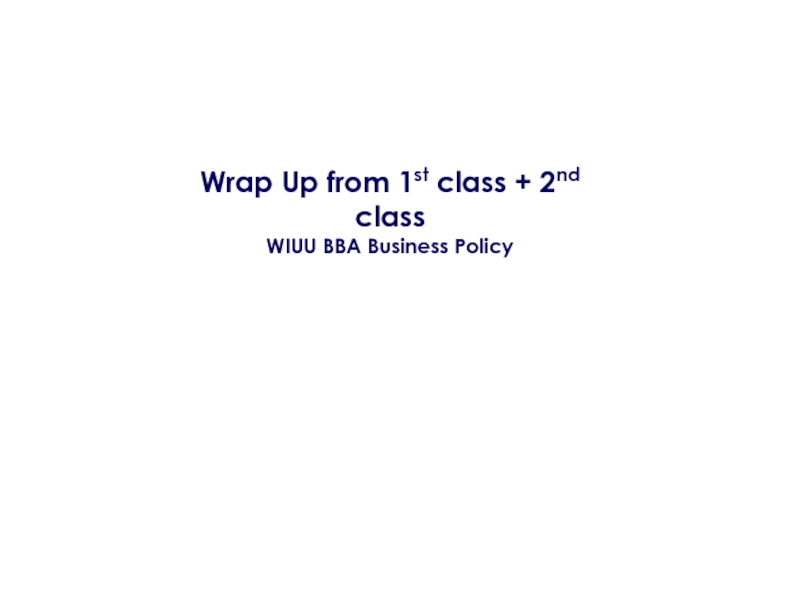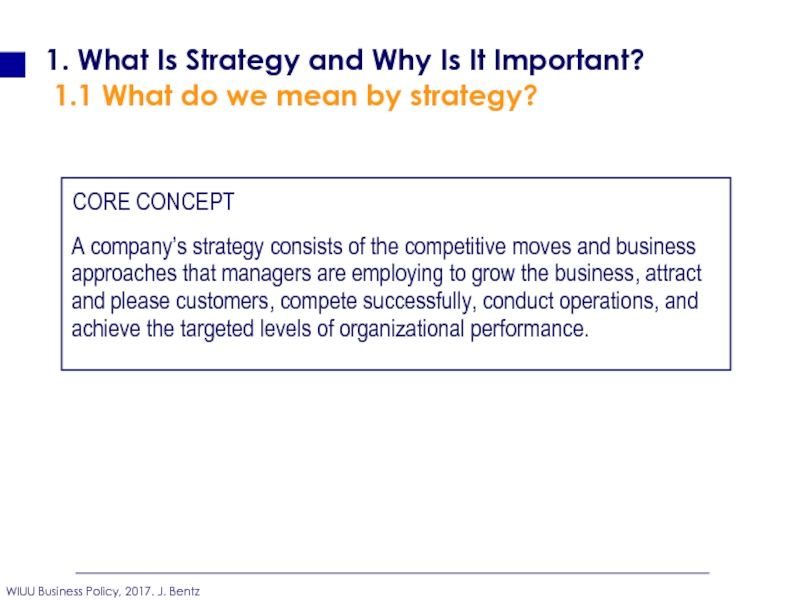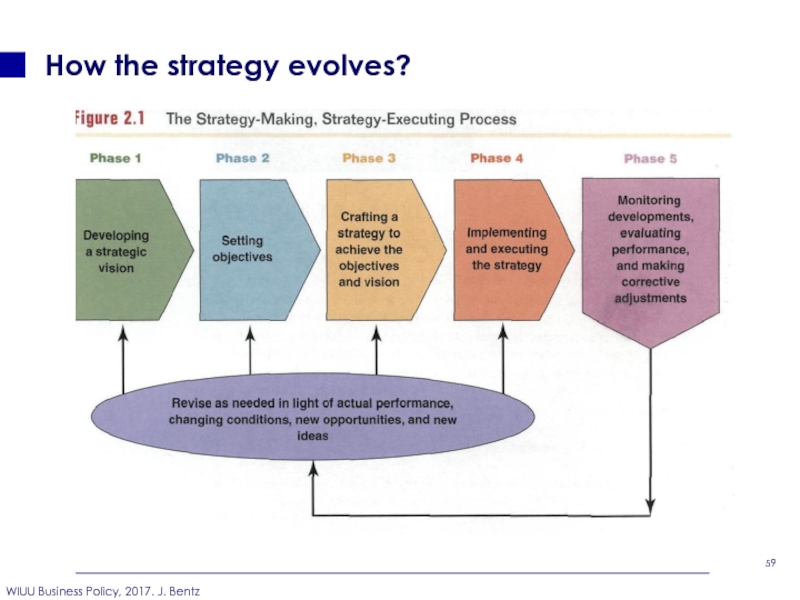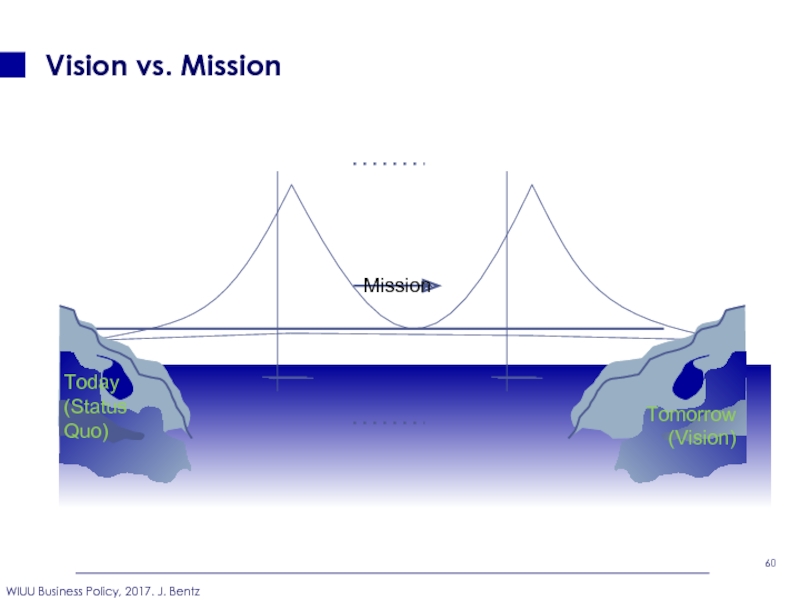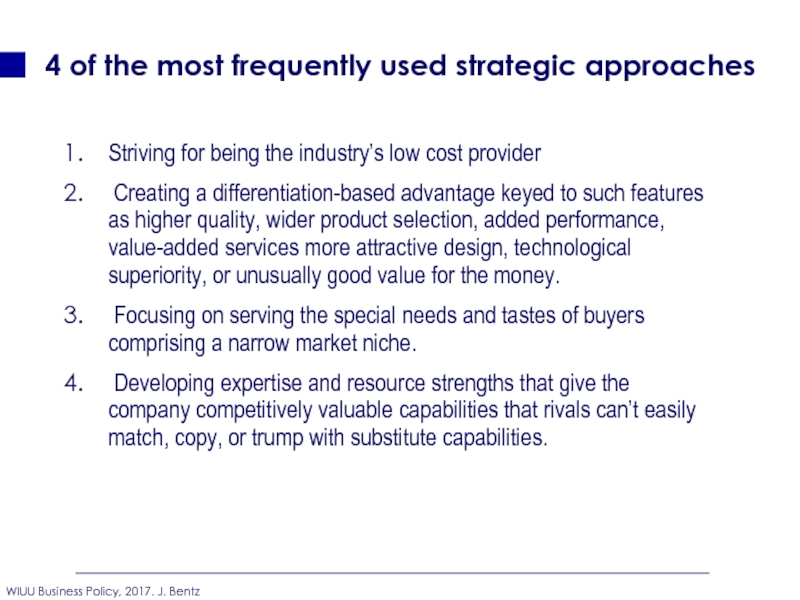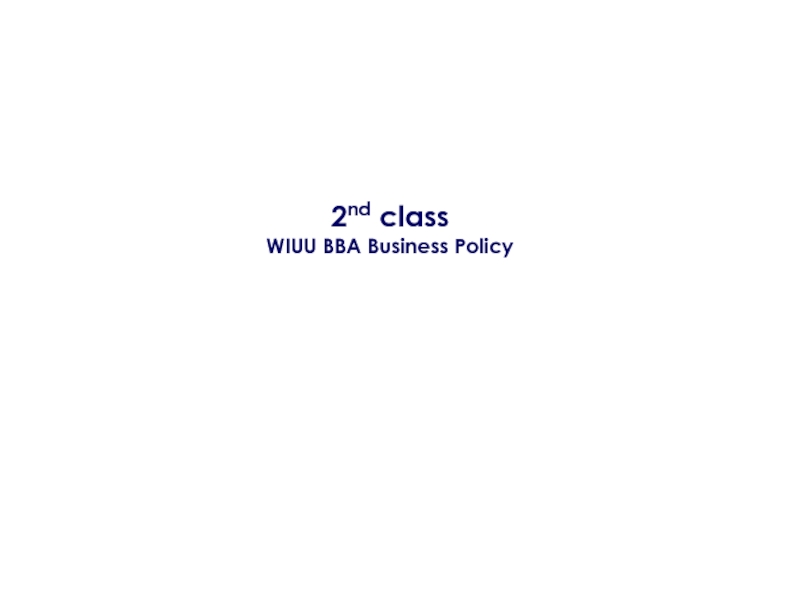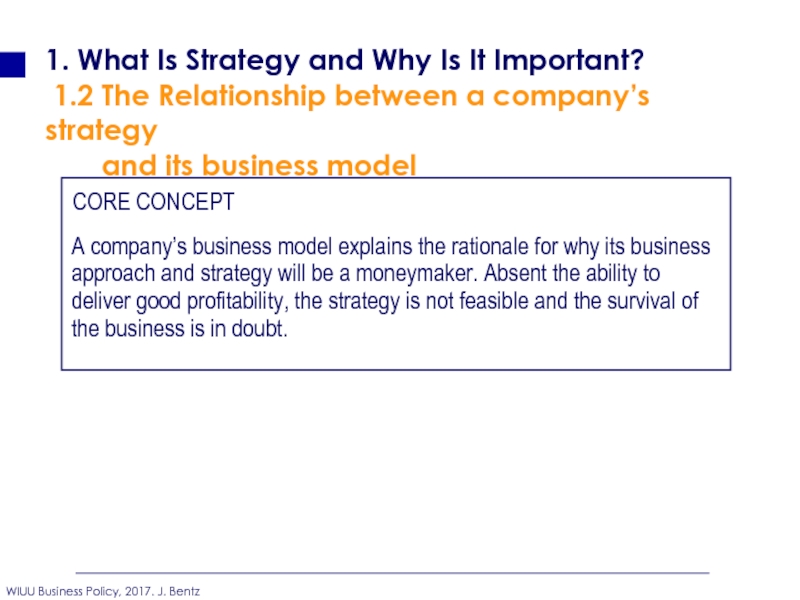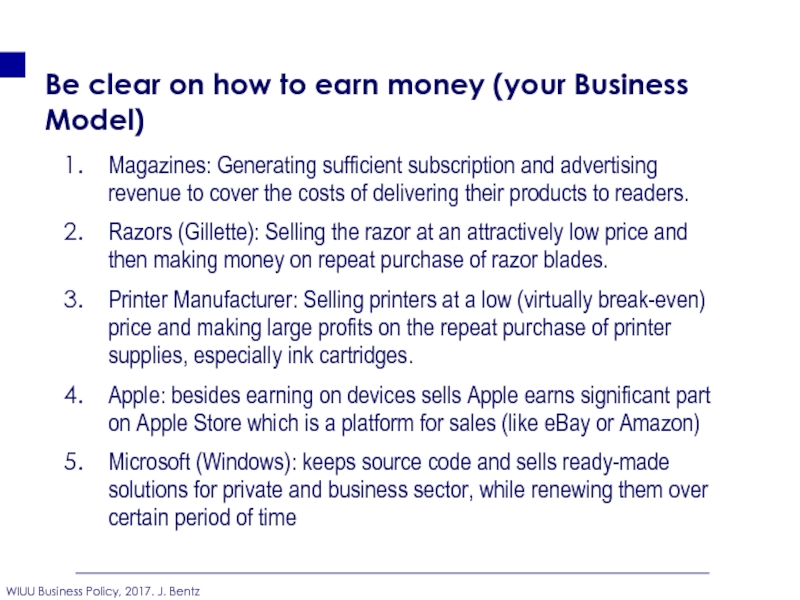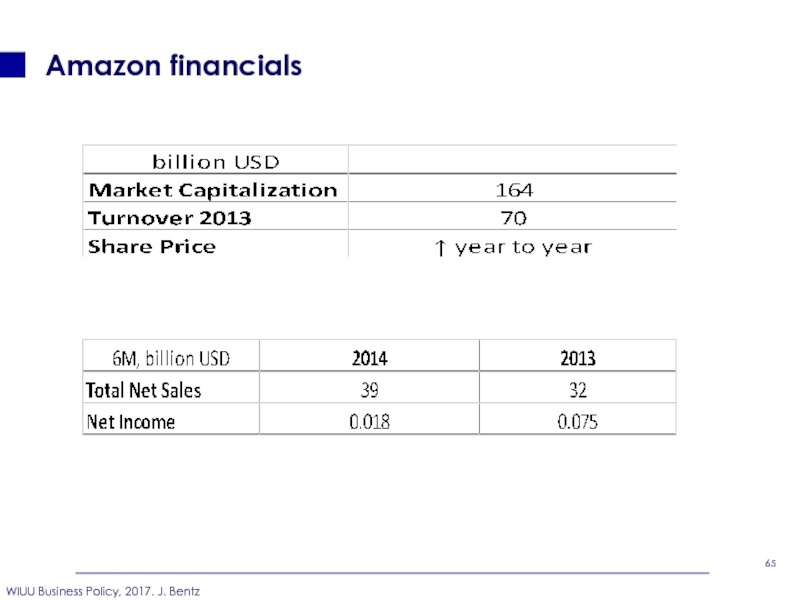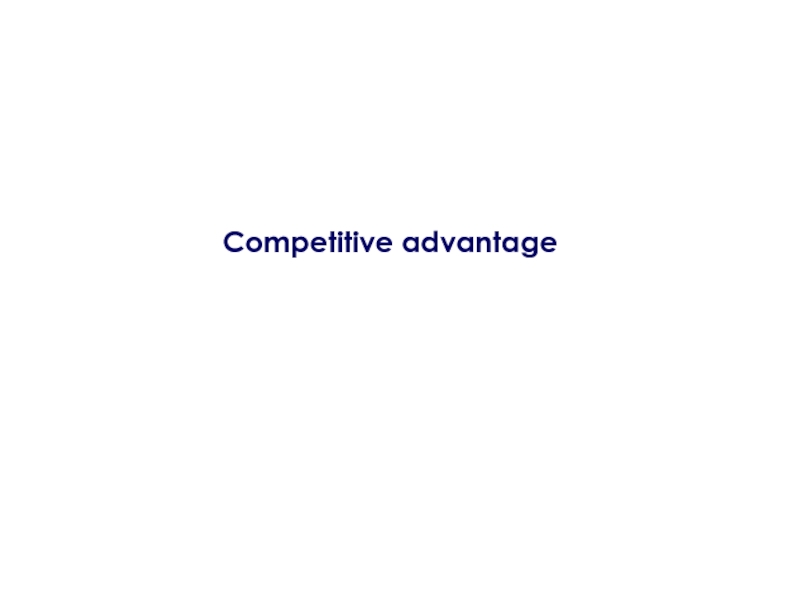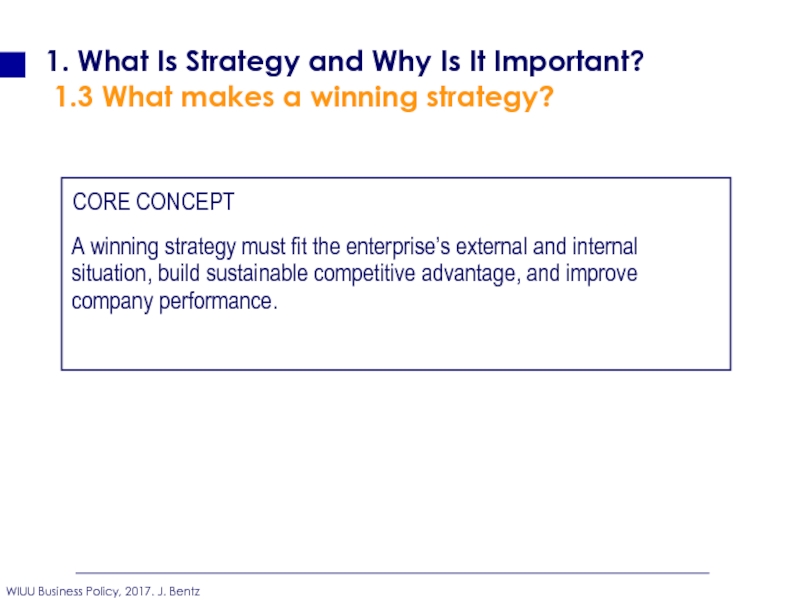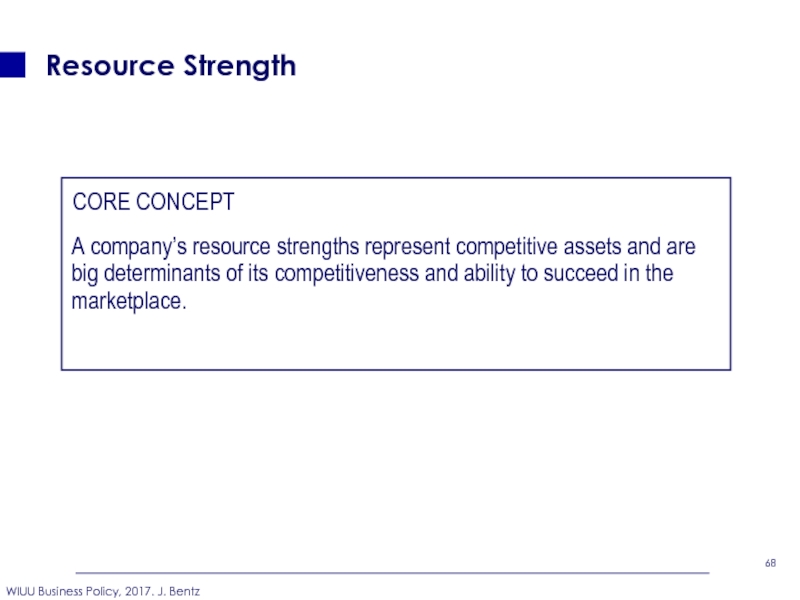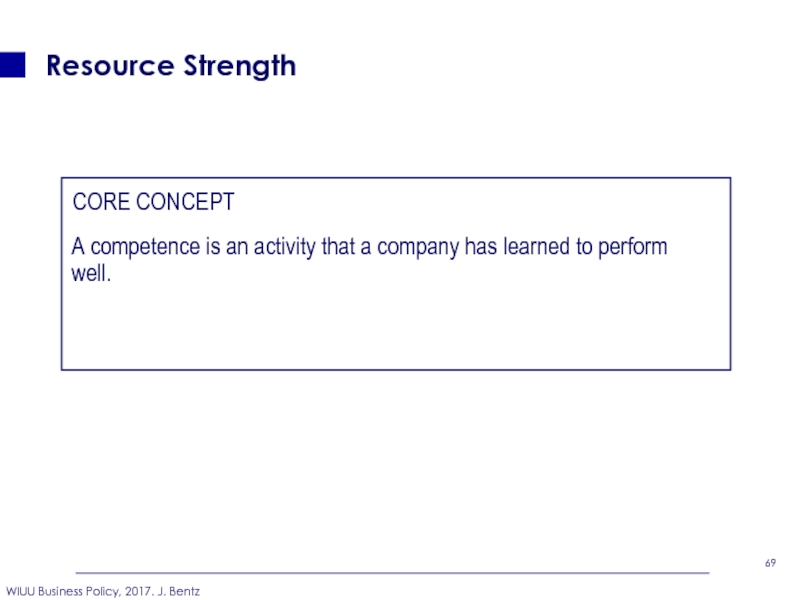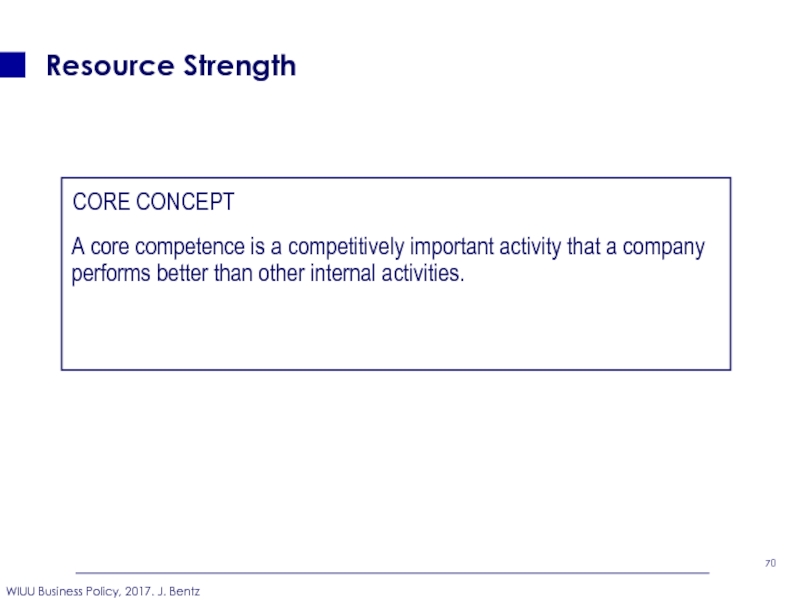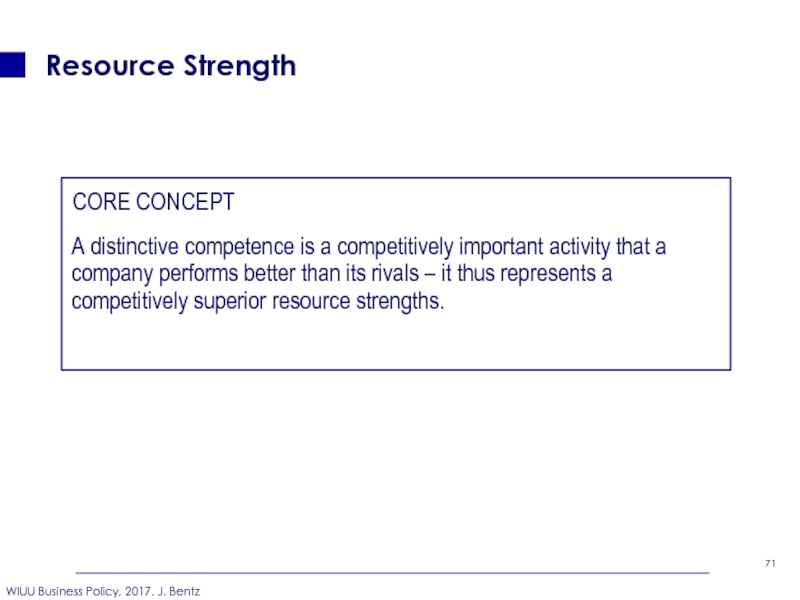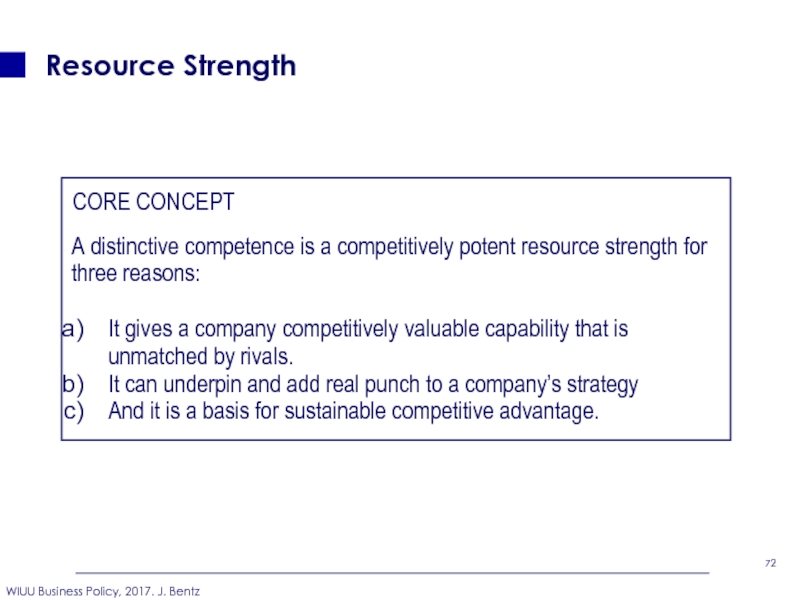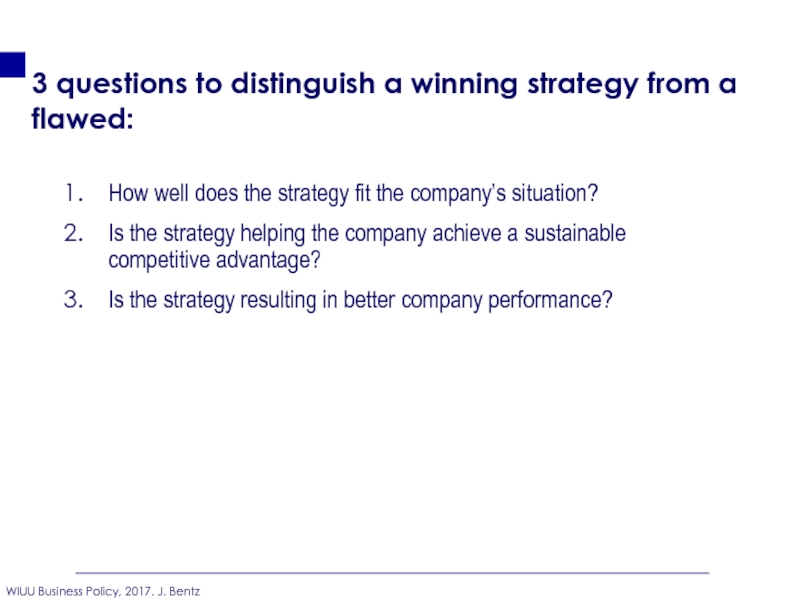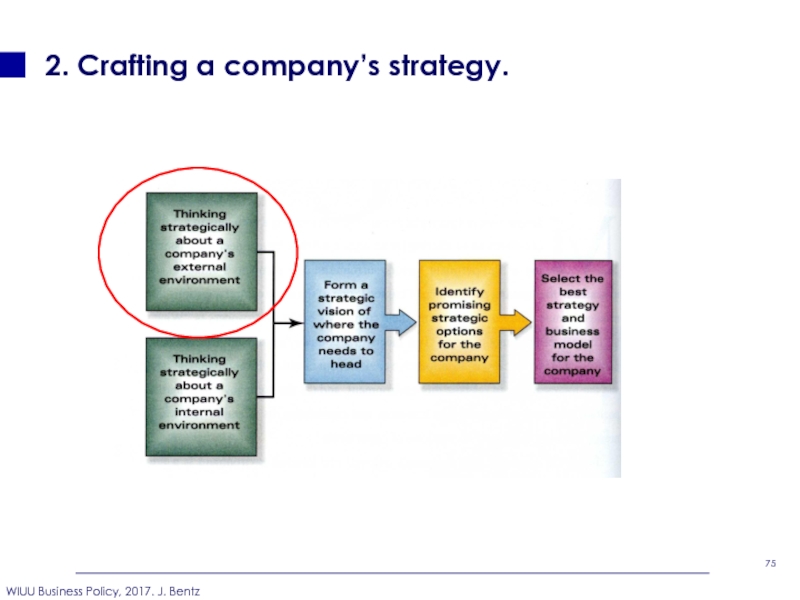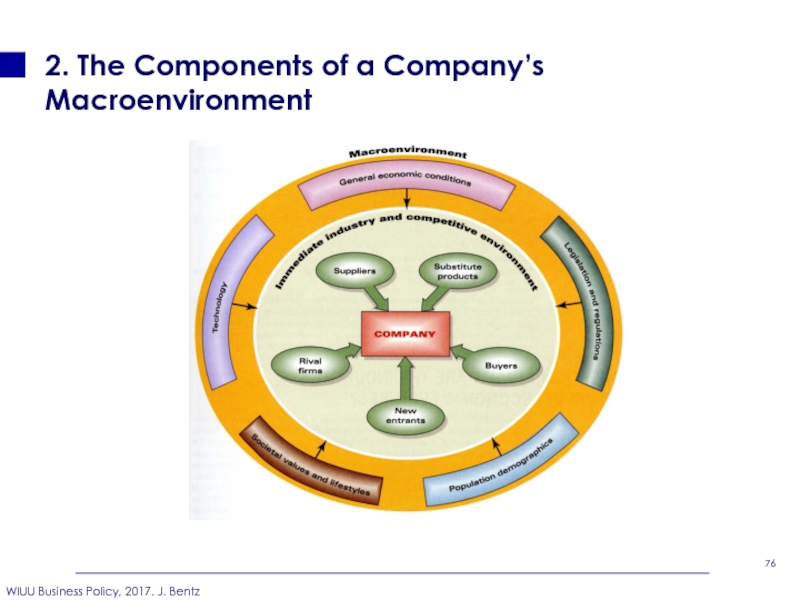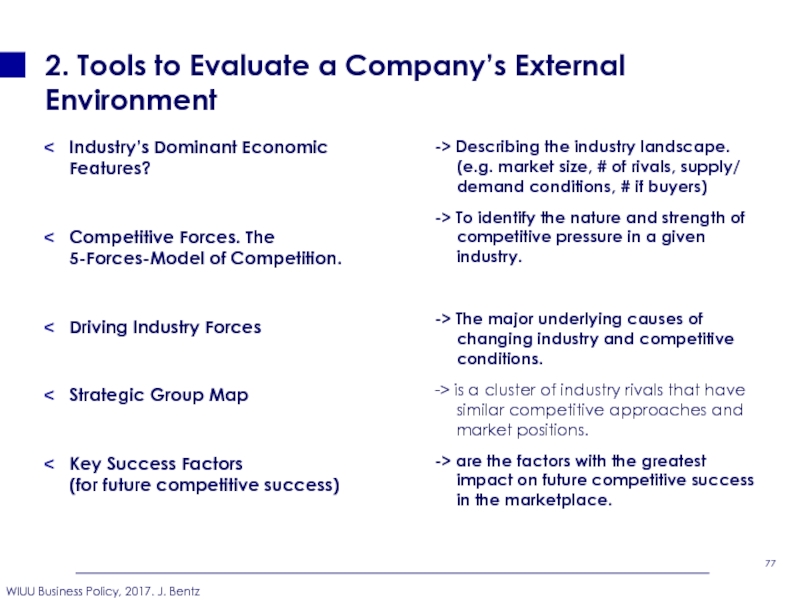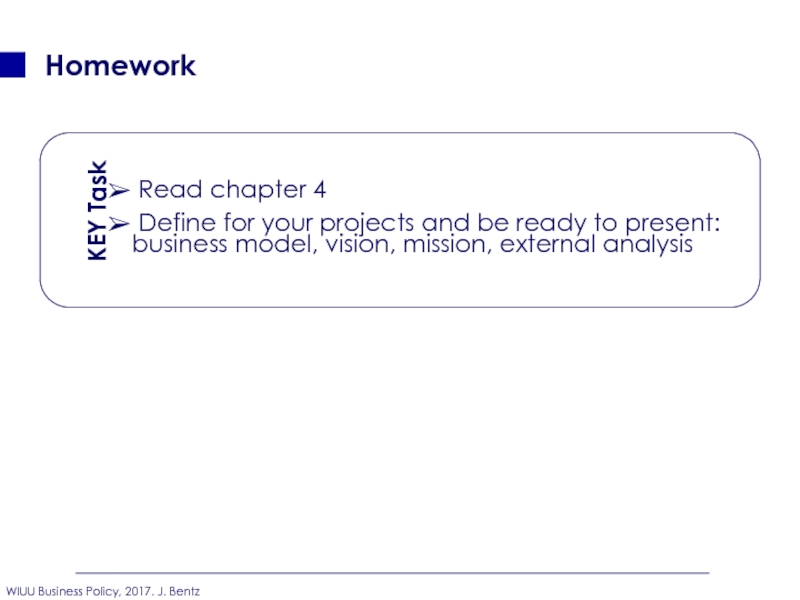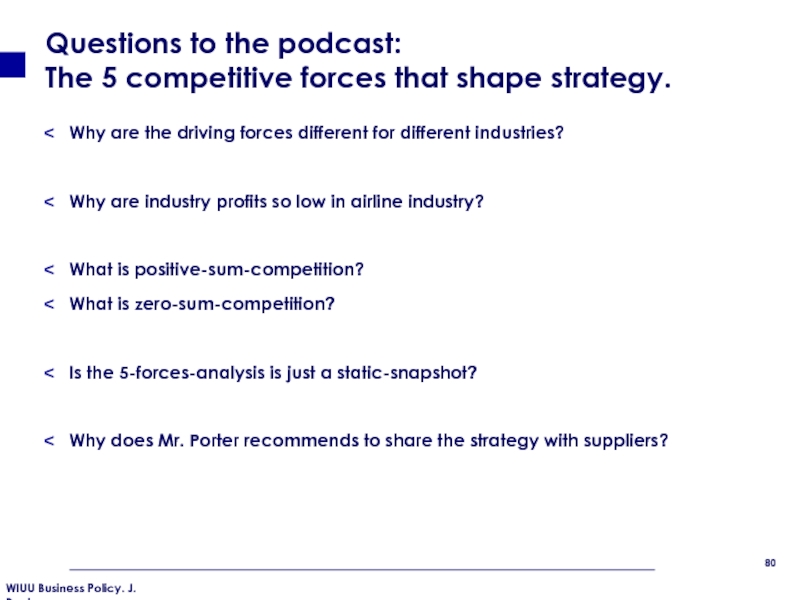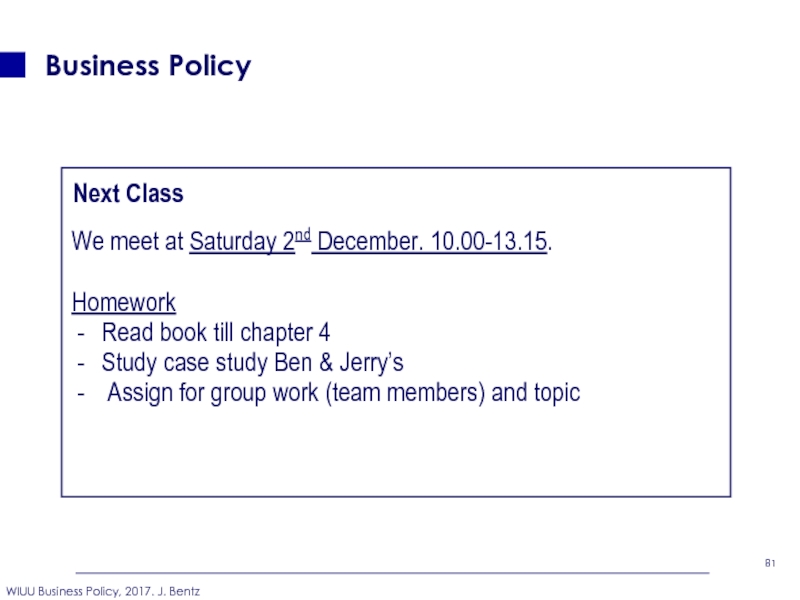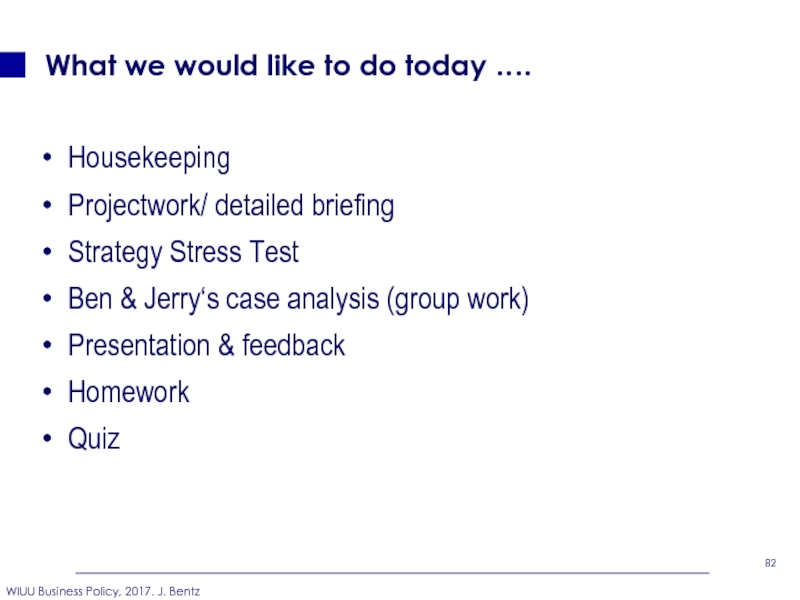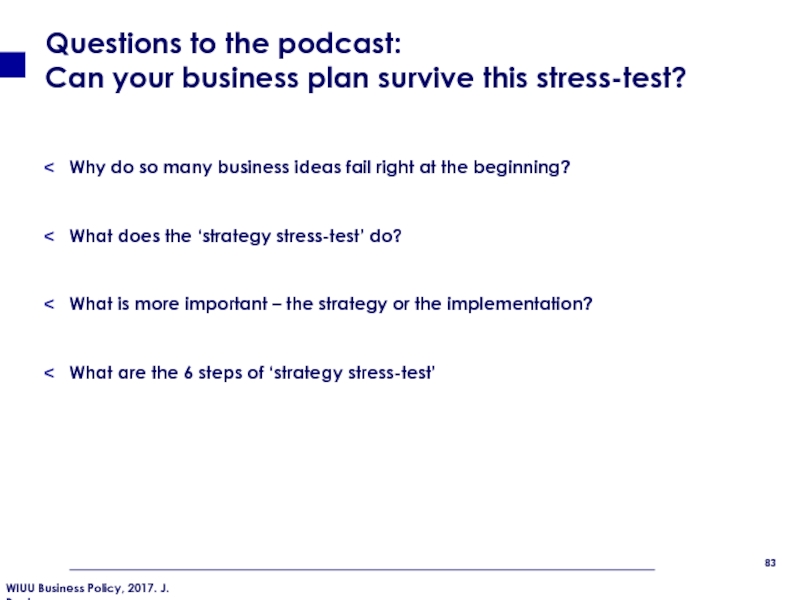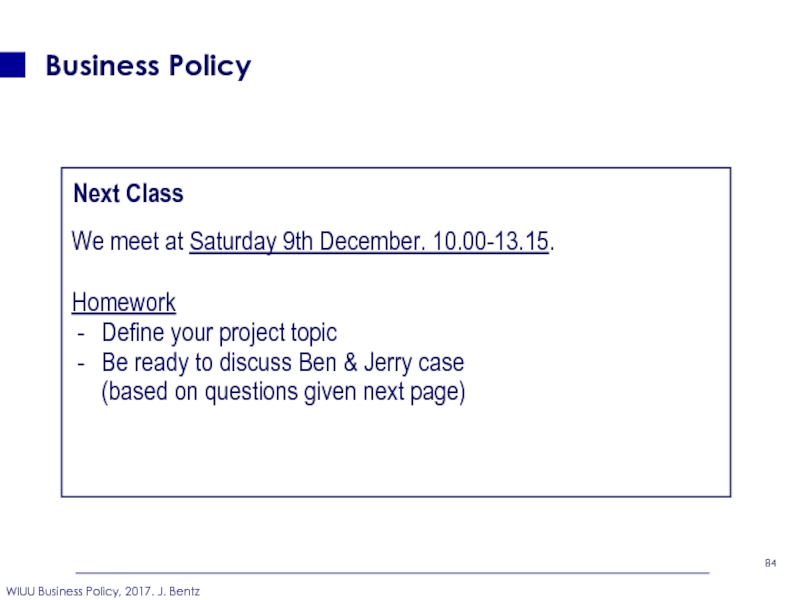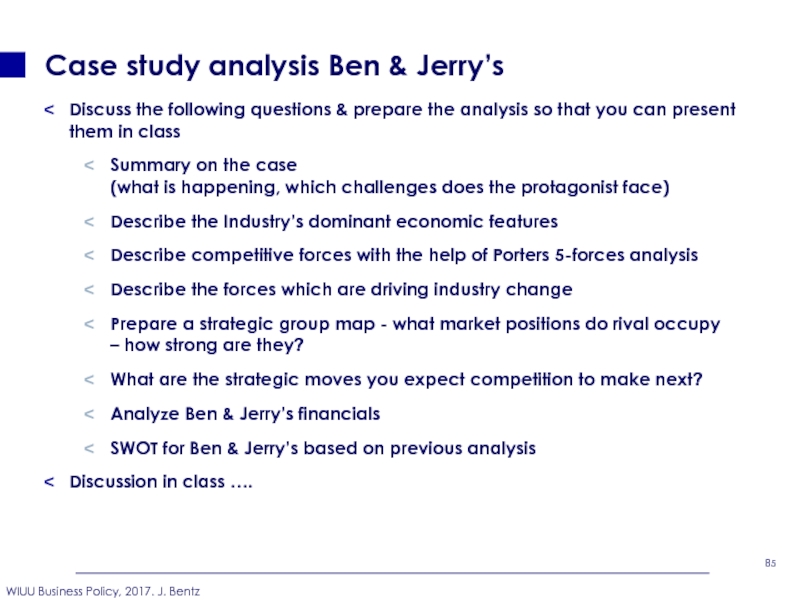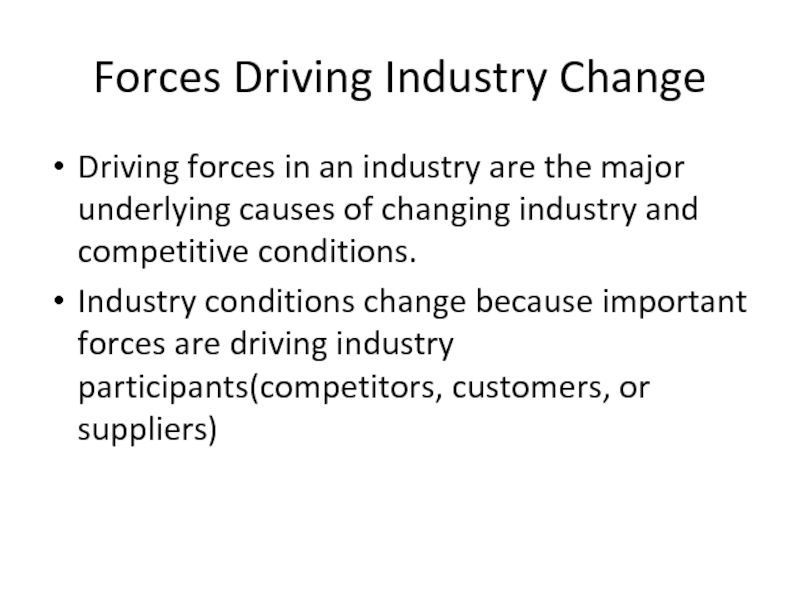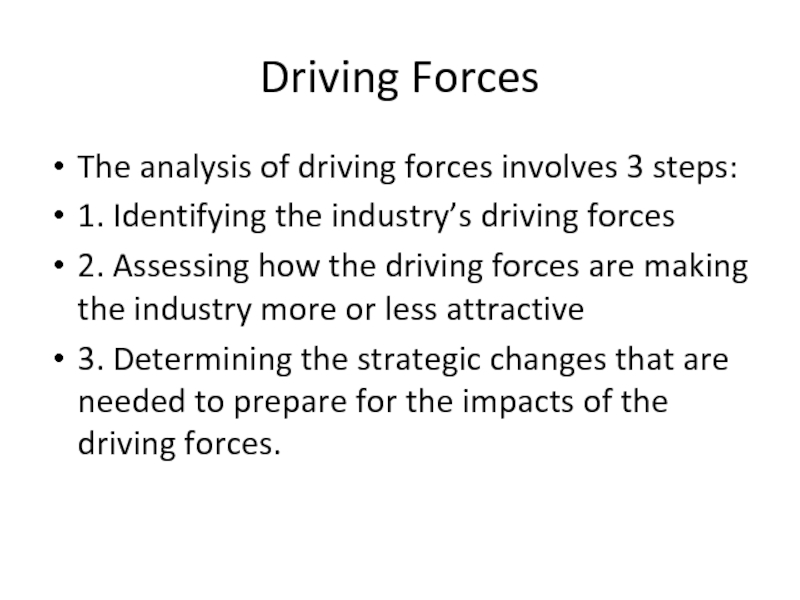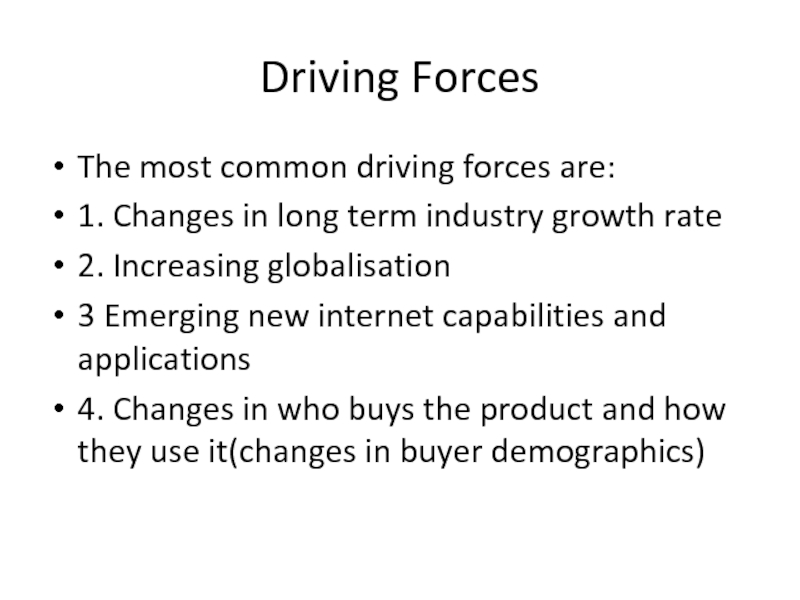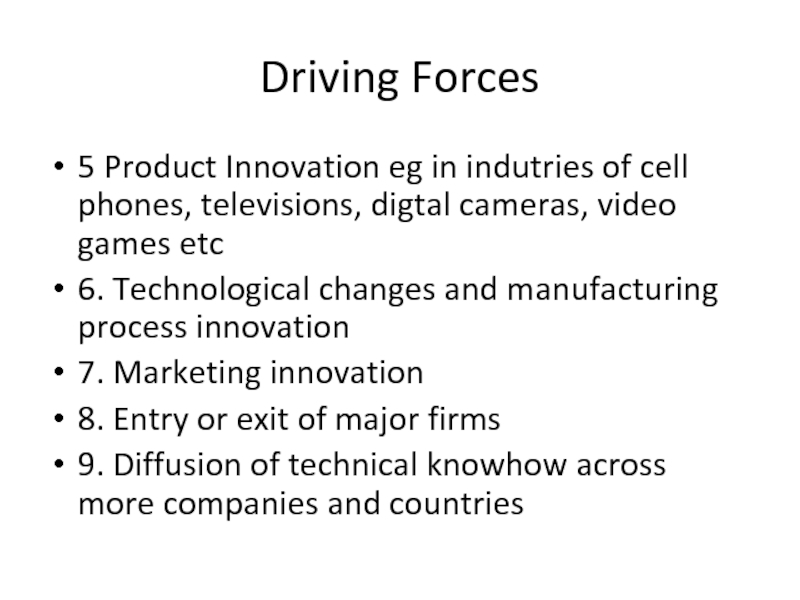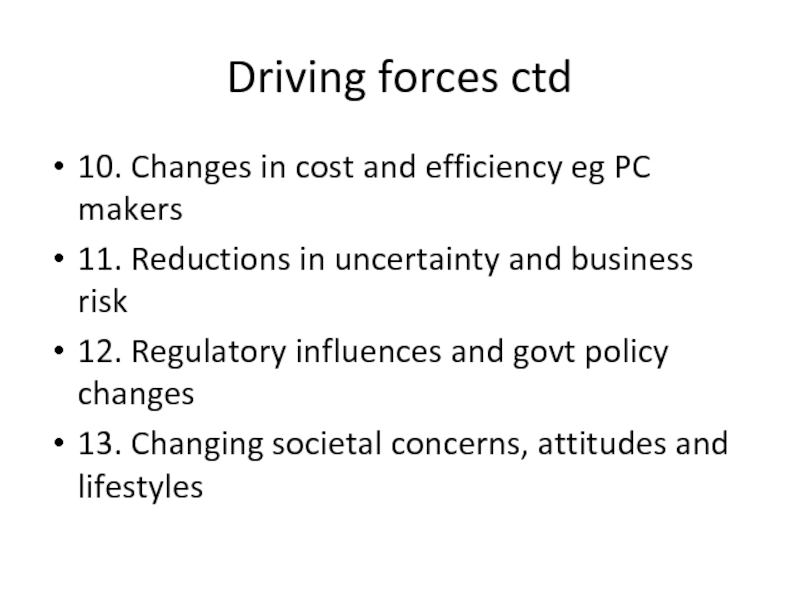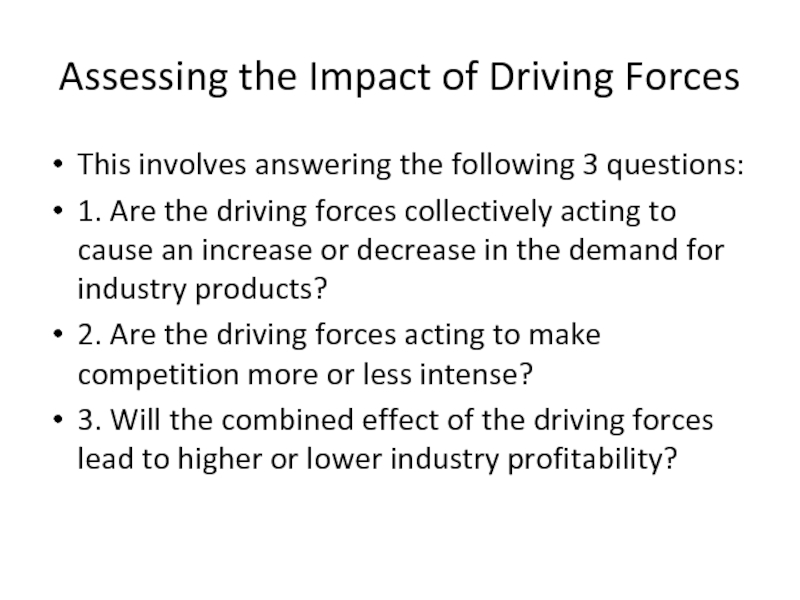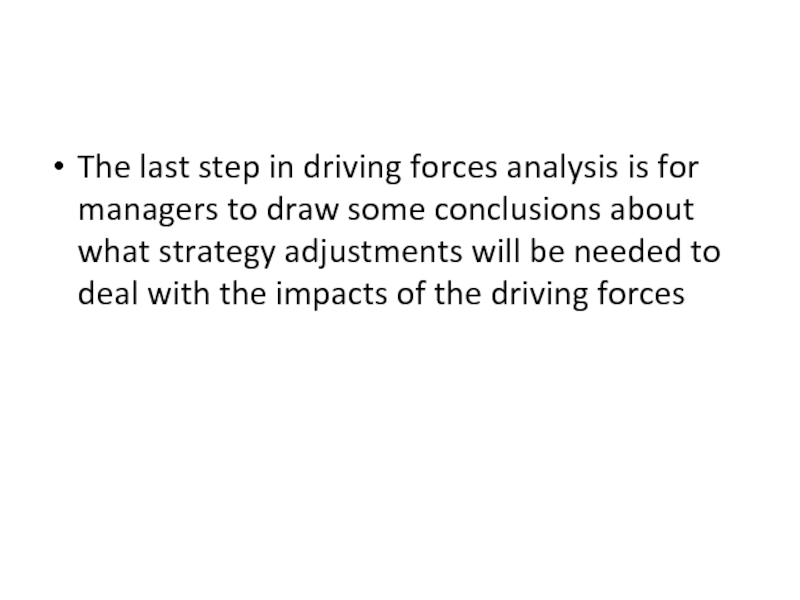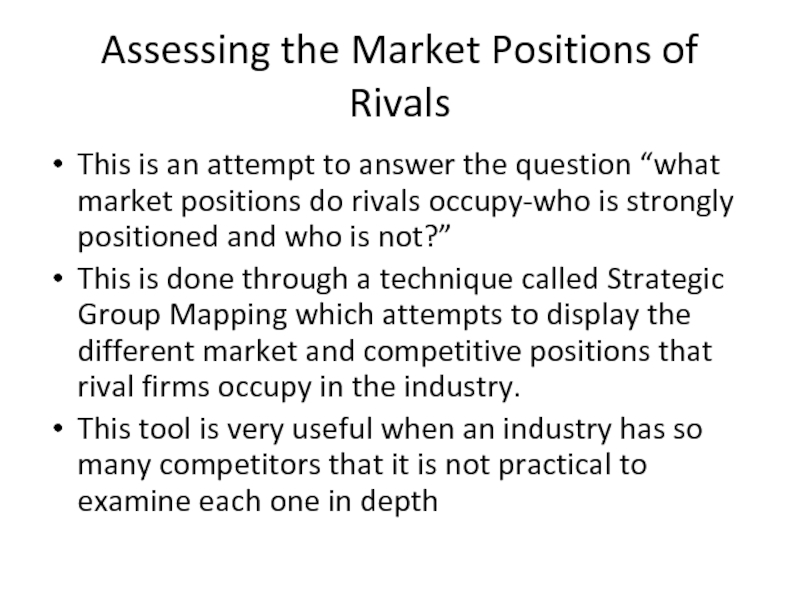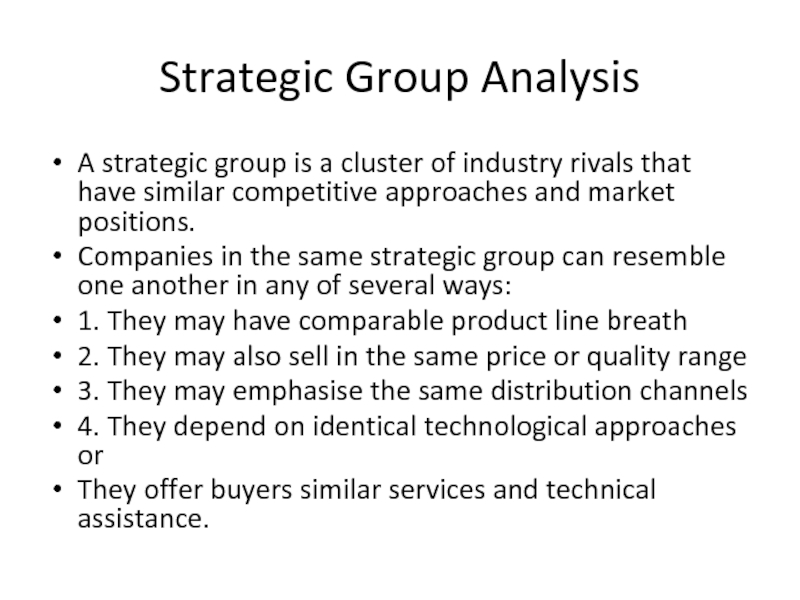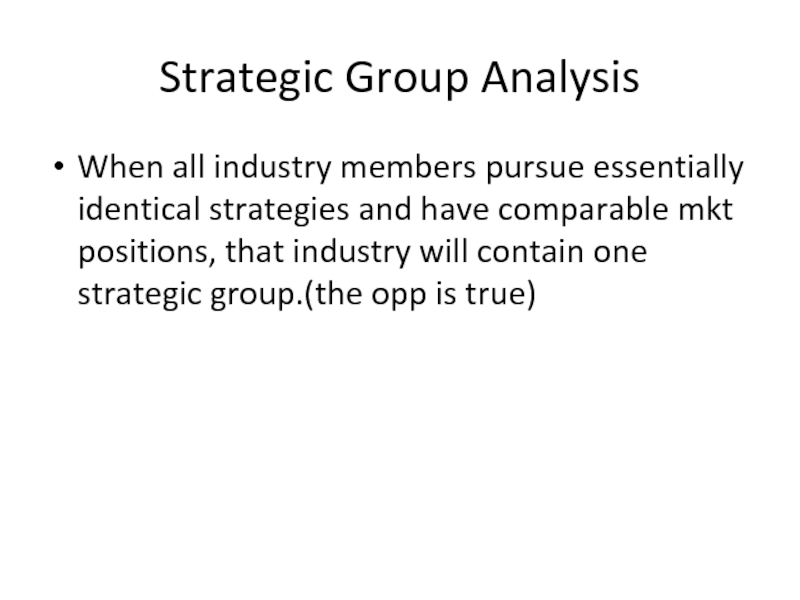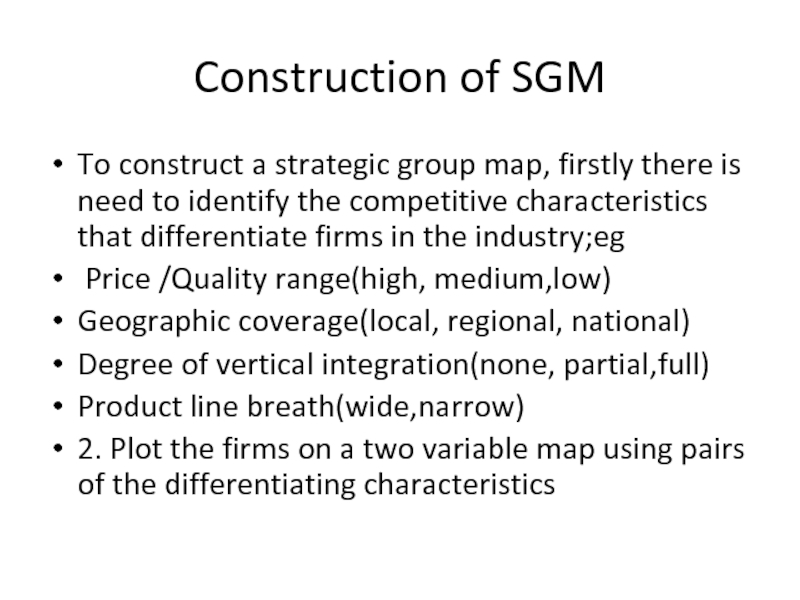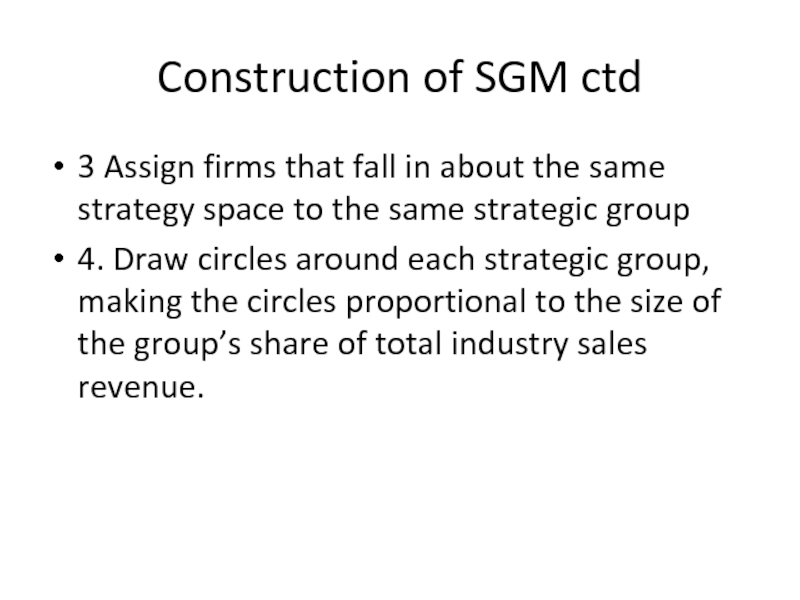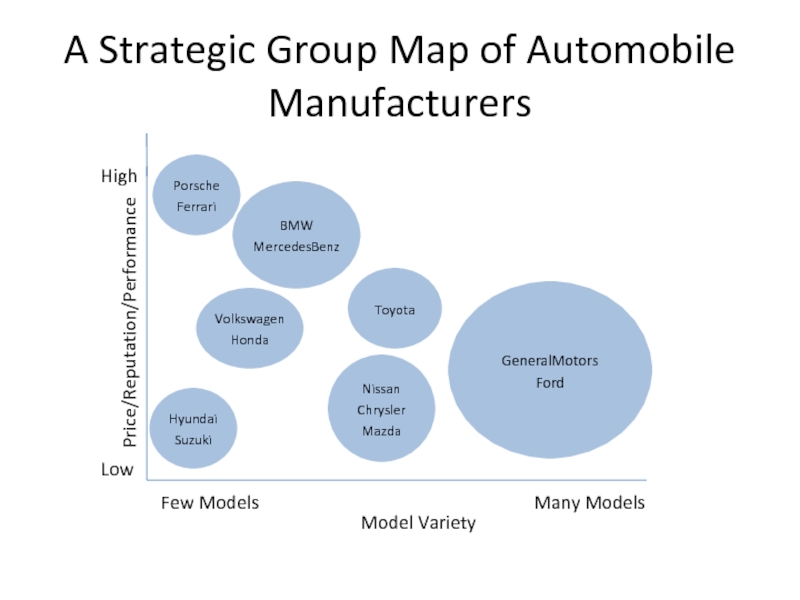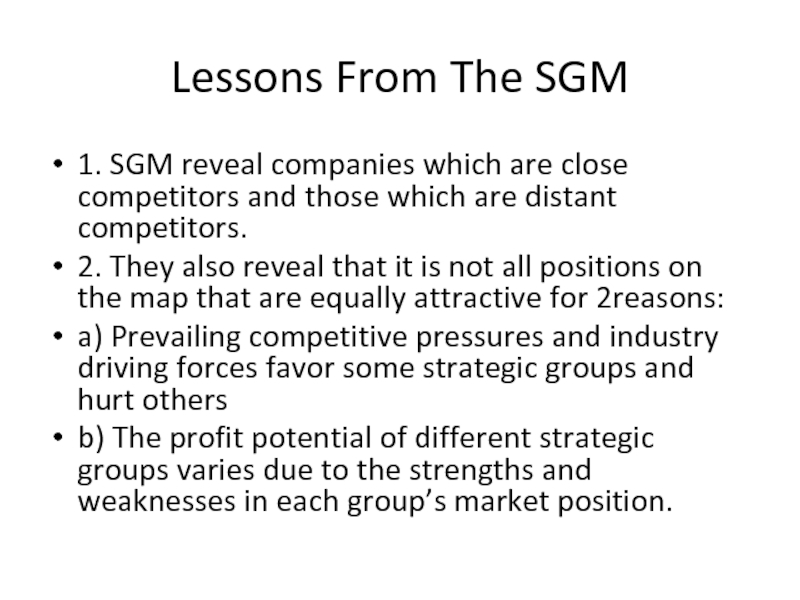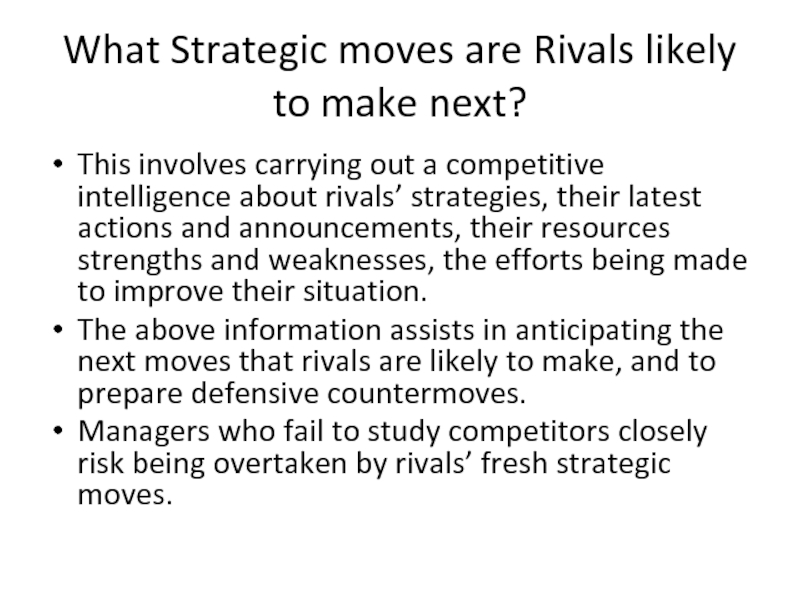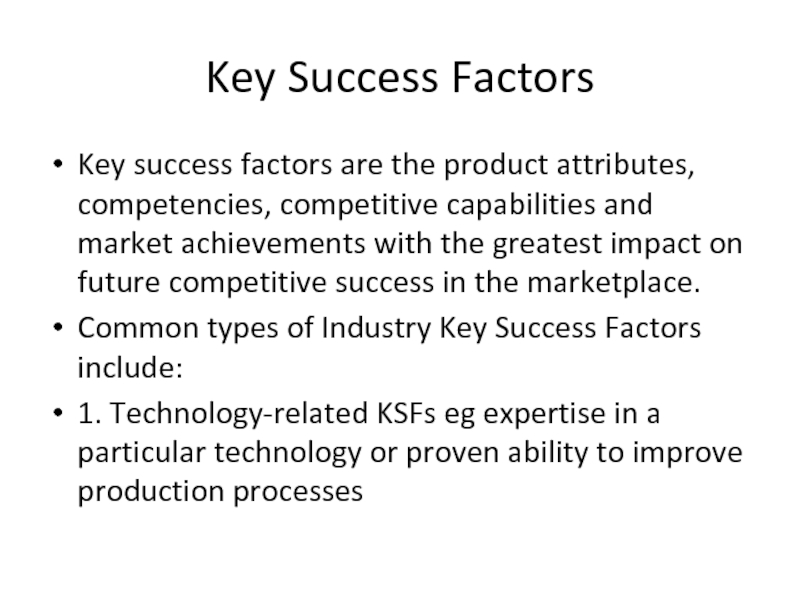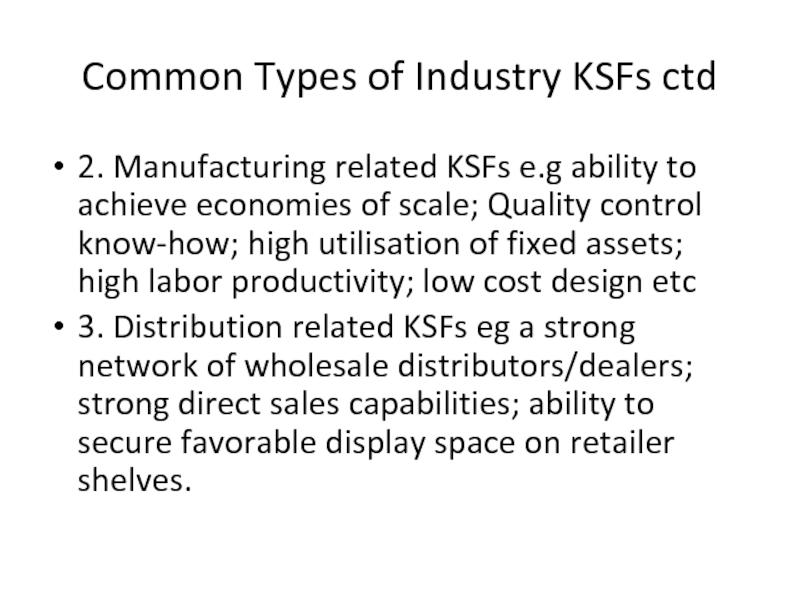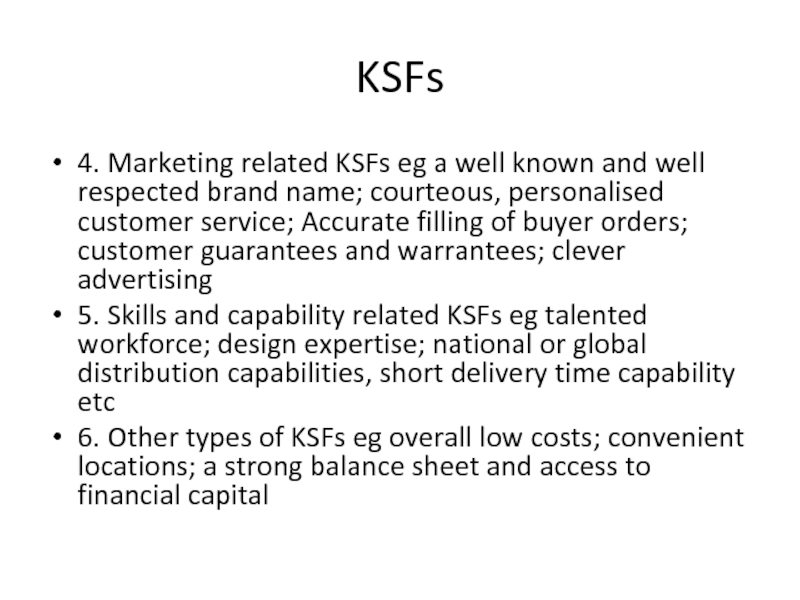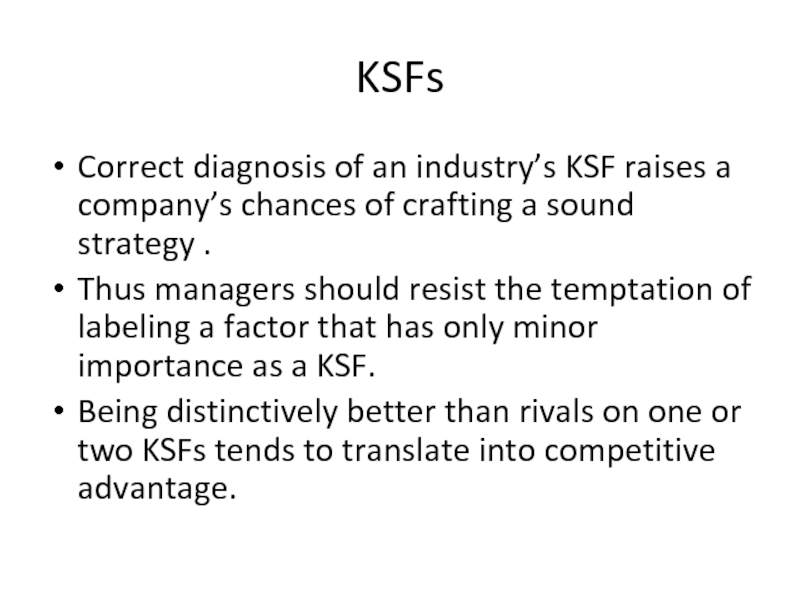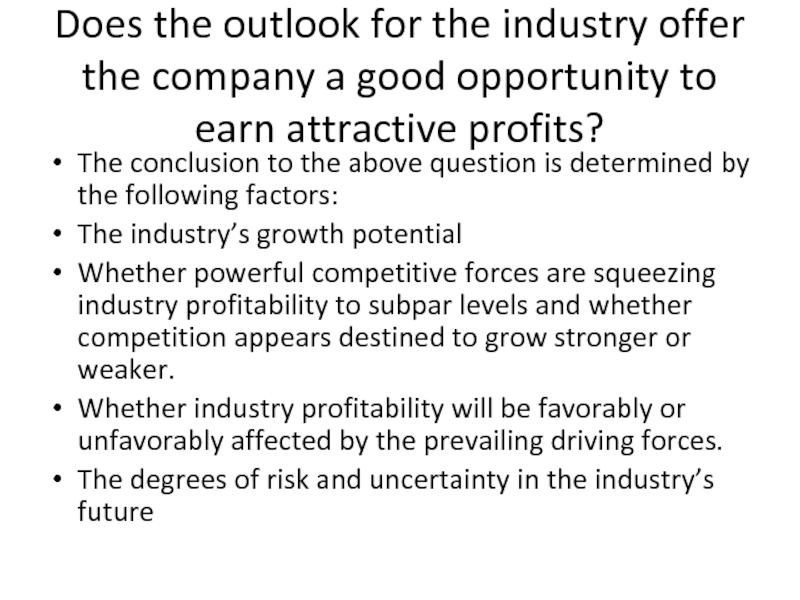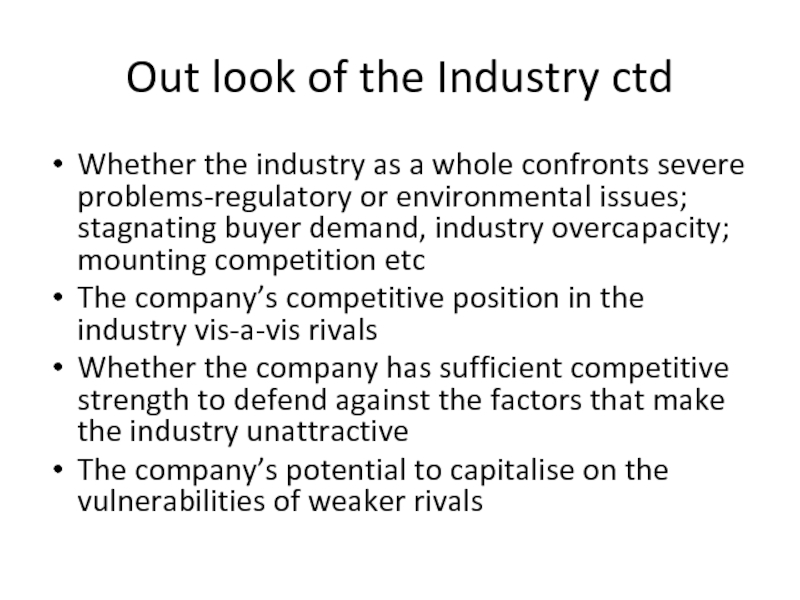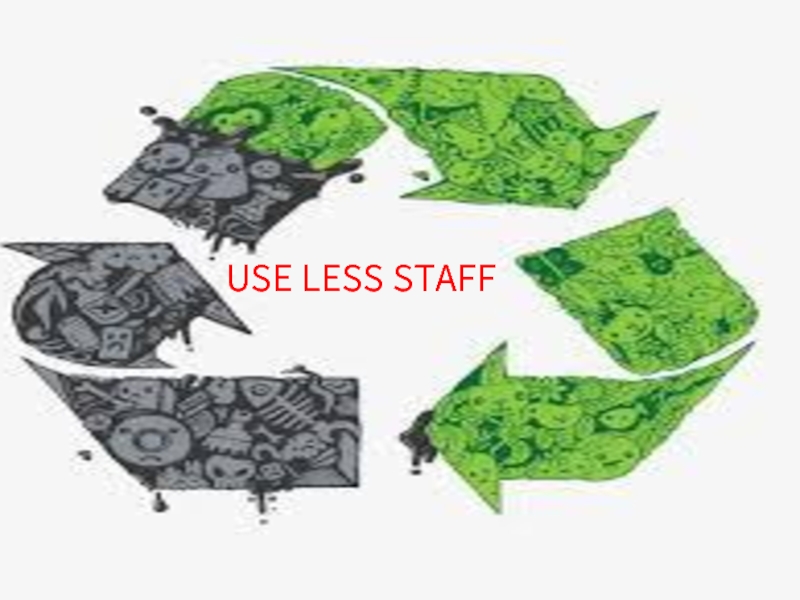- Главная
- Разное
- Дизайн
- Бизнес и предпринимательство
- Аналитика
- Образование
- Развлечения
- Красота и здоровье
- Финансы
- Государство
- Путешествия
- Спорт
- Недвижимость
- Армия
- Графика
- Культурология
- Еда и кулинария
- Лингвистика
- Английский язык
- Астрономия
- Алгебра
- Биология
- География
- Детские презентации
- Информатика
- История
- Литература
- Маркетинг
- Математика
- Медицина
- Менеджмент
- Музыка
- МХК
- Немецкий язык
- ОБЖ
- Обществознание
- Окружающий мир
- Педагогика
- Русский язык
- Технология
- Физика
- Философия
- Химия
- Шаблоны, картинки для презентаций
- Экология
- Экономика
- Юриспруденция
Change Management презентация
Содержание
- 1. Change Management
- 2. Let us play a quick marketing game
- 3. Adidas – German quality
- 4. Business Policy “Without Business Policy and
- 5. Business Policy “Business policy is study
- 6. Evolution of Business Policy as discipline. Origin
- 7. Evolution of Business Policy has undergone four
- 8. Evolution of Business Policy has undergone four
- 9. Evolution of Business Policy has undergone four
- 10. Core concept of Strategy: A company’s concept
- 11. Core concept of Strategy: Military Origins of
- 12. Core Concept of Strategy A company’s Strategy
- 13. Crafting and Executing Strategy WIUU BBA Business Policy
- 14. Structure and Organization What is
- 15. Structure and Organization What is
- 16. 1. What Is Strategy and Why Is
- 17. What do we mean by strategy?
- 18. Strategy and the Quest for Competitive Advantage
- 19. 4 of the most frequently used strategic
- 20. Identifying a company’s strategy – what to
- 21. Why a Company’s Strategy Evolves over Time
- 22. A Company’s strategy is redefined constantly
- 23. Strategy CONTENT Planning SCOPE Business Unit Corporate
- 24. 1. What Is Strategy and Why Is
- 25. To discuss: CAN BUSINESS ETHICS BE
- 26. Just keeping a company’s strategic actions within
- 27. 1. What Is Strategy and Why Is
- 28. Be clear on how to earn money
- 29. 1. What Is Strategy and Why Is
- 30. 3 questions to distinguish a winning strategy
- 31. 1. What Is Strategy and Why Is
- 32. Questions?
- 33. 2. Leading the Process of Crafting &
- 34. The Strategy-Making, Strategy-Executing Process 1 2 3
- 35. 2. Leading the Process of Crafting &
- 36. Factors to Consider in Deciding on a
- 37. Characteristics of an Effectively Worded Vision Statement
- 38. Common Shortcomings in Company Vision Statements
- 39. Examples
- 40. How a Strategic Vision Differs from a
- 41. 2. Leading the Process of Crafting &
- 42. Financial & Strategic objectives CORE CONCEPT
- 43. Examples of financial & strategic objectives Strategic
- 44. To discuss: ARE FINANCIAL OBJECTIVES ENOUGH
- 45. Good Strategy + competitiveness = future performance
- 46. Long term & short term targets needed
- 47. 2. Leading the Process of Crafting &
- 48. Company’s Strategy-Making Hierarchy Operating strategies within each
- 49. Strategic Vision + Objectives + Strategy =
- 50. 2. Leading the Process of Crafting &
- 51. 2. Leading the Process of Crafting &
- 52. Leading the strategic management process calls for
- 53. Staying on Top of How Well Things
- 55. Amazon. Task. (15min) Read page
- 56. Homework till 18th Nov.
- 57. Wrap Up from 1st class + 2nd class WIUU BBA Business Policy
- 58. 1. What Is Strategy and Why Is
- 59. How the strategy evolves?
- 60. Vision vs. Mission
- 61. 4 of the most frequently used strategic
- 62. 2nd class WIUU BBA Business Policy
- 63. 1. What Is Strategy and Why Is
- 64. Be clear on how to earn money
- 65. Amazon financials
- 66. Competitive advantage
- 67. 1. What Is Strategy and Why Is
- 68. Resource Strength CORE CONCEPT A company’s
- 69. Resource Strength CORE CONCEPT A competence
- 70. Resource Strength CORE CONCEPT A core
- 71. Resource Strength CORE CONCEPT A distinctive
- 72. Resource Strength CORE CONCEPT A distinctive
- 73. 3 questions to distinguish a winning strategy
- 74. External Analysis
- 75. 2. Crafting a company’s strategy.
- 76. 2. The Components of a Company’s Macroenvironment
- 77. 2. Tools to Evaluate a Company’s External
- 78. Questions?
- 79. Homework Read chapter 4
- 80. Questions to the podcast: The 5
- 81. Business Policy Next Class We
- 82. What we would like to do today
- 83. Questions to the podcast: Can your
- 84. Business Policy Next Class We
- 85. Case study analysis Ben & Jerry’s
- 86. Forces Driving Industry Change Driving forces in
- 87. Driving Forces The analysis of driving forces
- 88. Driving Forces The most common driving forces
- 89. Driving Forces 5 Product Innovation eg in
- 90. Driving forces ctd 10. Changes in cost
- 91. Assessing the Impact of Driving Forces This
- 92. The last step in driving forces
- 93. Assessing the Market Positions of Rivals This
- 94. Strategic Group Analysis A strategic group is
- 95. Strategic Group Analysis When all industry members
- 96. Construction of SGM To construct a strategic
- 97. Construction of SGM ctd 3 Assign firms
- 98. A Strategic Group Map of Automobile Manufacturers
- 99. Lessons From The SGM 1. SGM reveal
- 100. What Strategic moves are Rivals likely to
- 101. Key Success Factors Key success factors are
- 102. Common Types of Industry KSFs ctd 2.
- 103. KSFs 4. Marketing related KSFs eg a
- 104. KSFs Correct diagnosis of an industry’s KSF
- 105. Does the outlook for the industry offer
- 106. Out look of the Industry ctd Whether
Слайд 2Let us play a quick marketing game
Quick task for warming
If YOU were a well known brand which would that be?
Which positive sides do you have/ which negative ones?
… 3 minutes to prepare.
Слайд 3
Adidas –
German quality
Always a step ahead in technology
Intelligent
Not cheap but affordable
One of the best in his field ☺
Down-to-earth, cheerful
BIG Ego (Self-confident)
Слайд 4Business Policy
“Without Business Policy and Strategy, an organisation
is like a
like a tramp; it has no place to go”
Слайд 5Business Policy
“Business policy is study of the function and
responsibility of
problems that affect the success of the in the
whole organisation and the decisions that
determine the direction of the organisation and
shape its future.”
Слайд 6Evolution of Business Policy as discipline.
Origin – 1911- Harvard Business School
Development of subject of Business Policy has always followed the demands of real life business.
1930 -1960: Environment change: New Products:
Continuously changing market: Ford Foundation recommended a “Capstone” course of Business Policy which would give the students an opportunity to pull together what they have learned in the separate business fields and utilise this knowledge in the analysis of complex business problems.
~1990: The course has become an integral part of management education curriculum.
Слайд 7Evolution of Business Policy has undergone four Paradigms
Paradigm One: Ad-hoc Policy
1900 -1930: Era of Mass Production – Maximising output, normally a Single Product, Standardised and low cost product, catering to unique set of customers servicing limited geographical area – Informal control and co-ordination. The Strategic planning was centered on maximising output.
Paradigm Two – Integrated Policy Formulation.
1930-1940: Changes in Technology, Turbulence in Political environment, emergence of new industries, demand for novelty products even at higher costs, product differentiation, market segmentation in increasingly competitive and changing markets. These all made investment decisions increasingly difficult. This was era of integrating all functional areas and framing policies to guide managerial actions.
Слайд 8Evolution of Business Policy has undergone four Paradigms
Paradigm Three – The
1940- 1960: Planned policy became irrelevant due to increasingly complex and accelerating changes. Firms had to anticipate environmental changes. A strategy needed to be formed with critical look at basic concept of Business and its relationship to the existing environment then.
Слайд 9Evolution of Business Policy has undergone four Paradigms
Paradigm Four – The
1980 & onwards: The focus of Strategic Management is on the strategic process of business firms and responsibilities of general management.
Everything out side the four walls is changing rapidly and this phenomenon is called as “Discontinuity” by Mr. Peter Drucker. Past experiences are no guarantee as science and technology is moving faster. The future is no more extension of the past or the present.
What to produce, where to market, which new business to enter, which one to quit and how to get internally stronger and resourceful are the new stakes.
Strategic Planning is required to be done to endow the enterprise with certain fundamental competencies / distinctive strengths which could take care of eventualities resulting from unexpected environmental changes.
Слайд 10Core concept of Strategy:
A company’s concept of Strategy consists of the
Слайд 11Core concept of Strategy:
Military Origins of Strategy: Strategy is a term
Military origins of strategy are century old. It seems sensible to begin our examination of strategy with the military view.
Substitute "resources" for troops and the transfer of the concept to the business world begins to take form.
Strategy also refers to the means by which policy is effected, As per “Clauswitz” the war is the continuation of political relations via other means.
Слайд 12Core Concept of Strategy
A company’s Strategy consists of the competitive moves
Слайд 14Structure and Organization
What is Strategy and Why Does it Matter?
The Managerial Process of Crafting and Executing Company Strategies
Concepts and Analytical Tools for Evaluating a Company’s Situation
Tailoring Strategy to Various Company Situations
Should Company Strategies Be Ethical and/or Socially Responsible?
Managerial Keys to Successfully Executing the Chosen Strategy.
Introduction and Overview
Crafting a Strategy
Concepts
and Tools
Executing the
strategy
Concepts and Techniques for Crafting and Executing Strategy
Слайд 15Structure and Organization
What is Strategy and Why Does it Matter?
The Managerial Process of Crafting and Executing Company Strategies
Concepts and Analytical Tools for Evaluating a Company’s Situation
Tailoring Strategy to Various Company Situations
Should Company Strategies Be Ethical and/or Socially Responsible?
Managerial Keys to Successfully Executing the Chosen Strategy.
Introduction and Overview
Crafting a Strategy
Concepts
and Tools
Executing the
strategy
Concepts and Techniques for Crafting and Executing Strategy
today's focus
Слайд 161. What Is Strategy and Why Is It Important? 1.1 What
CORE CONCEPT
A company’s strategy consists of the competitive moves and business approaches that managers are employing to grow the business, attract and please customers, compete successfully, conduct operations, and achieve the targeted levels of organizational performance.
Слайд 17What do we mean by strategy?
A Company’s strategy is all
How management intends to grow the business
How it will build a loyal clientele and outcompete rivals
How each functional piece of the business (research and development, supply chain activities, production, sales and marketing, distribution, finance, and Human resources) will be operated
How performance will be boosted.
Слайд 18Strategy and the Quest for Competitive Advantage
CORE CONCEPT
A company achieves sustainable
Слайд 194 of the most frequently used strategic approaches
Striving for being the
Creating a differentiation-based advantage keyed to such features as higher quality, wider product selection, added performance, value-added services more attractive design, technological superiority, or unusually good value for the money.
Focusing on serving the special needs and tastes of buyers comprising a narrow market niche.
Developing expertise and resource strengths that give the company competitively valuable capabilities that rivals can’t easily match, copy, or trump with substitute capabilities.
Слайд 20Identifying a company’s strategy – what to look for
The pattern of
Actions to diversify the company’s revenues and earnings by entering new segments
Actions to strengthen competitive capabilities and correct competitive weaknesses
Actions and approaches used in managing R&D, production, sales and marketing, finance, and other key activities.
Actions to strengthen competitiveness via strategic alliances and collaborative partnerships
Actions to strengthen market standing and competitiveness by acquiring or merging with other companies
Actions to capture emerging market opportunities and defend against external threats to the company’s business prospects
Actions to enter new geographic or product markets or exit existing ones
Actions to respond to changing market conditions or other external factors
Actions to gain sales & market share via lower prices, more performance, better design, quality or customer service, ….
Слайд 21Why a Company’s Strategy Evolves over Time
CORE CONCEPT
Changing circumstances and ongoing
Слайд 22A Company’s strategy is redefined constantly
Prior Version of Company Strategy
Latest
Abandoned strategy elements
Adaptive reactions to changing circumstances
New initiatives plus ongoing strategy elements continued form prior periods
Reactive Strategy Elements
Proactive Strategy Elements
Слайд 23Strategy
CONTENT
Planning
SCOPE
Business Unit
Corporate Level … Interfirm level strategies
50's
60's
Early
70's
Early
00's
Early
80's
Early
90's
Late
70's
Corporate
Planning
Budgeting/
Controlling
Industry Analysis
Competitive
Advantage
Strategic
Innovation
Competitive
Interaction
Portfolio
Strategy
And beyond?
?
Impact of
Disruptive Innovation
Simple Rules
Strategic gaming – game theory
Systems dynamics
Network & cooperation strategies
Scenario planning
Recently there has been a shift towards the corporate strategic level in academia – Adaptation of interdisciplinary approaches
Слайд 241. What Is Strategy and Why Is It Important? 1.2 Strategy
CORE CONCEPT
Ethics go beyond legality: to meet the standard of being ethical, a strategy must entail actions that can pass moral scrutiny in the sense of not being shady, unconscionable, or injurious to others or unnecessarily harmful to the environment.
Слайд 25
To discuss:
CAN BUSINESS ETHICS BE AN ELEMENT OF COMPETITIVE
DO YOU SEE DIFFERENCES BETWEEN WESTERN EUROPE & UKRAINE?
1.2 Strategy & Ethics: Passing the test of moral security?
Слайд 26Just keeping a company’s strategic actions within the bounds of what
Ethical and moral standards are not governed by what is legal
Ethical behavior includes, but is not limited to corporate responsibility – in regards to community, environment
In many countries consumers care about companies ethics (!)
e.g. KitKat from Nestle.
http://www.nowpublic.com/environment/nestle-kit-kat-palm-oil-crisis-greenpeace-uses-facebook-youtube-2595022.html
Слайд 271. What Is Strategy and Why Is It Important? 1.3 The
CORE CONCEPT
A company’s business model explains the rationale for why its business approach and strategy will be a moneymaker. Absent the ability to deliver good profitability, the strategy is not feasible and the survival of the business is in doubt.
Слайд 28Be clear on how to earn money (your Business Model)
Magazines: Generating
Razors (Gillette): Selling the razor at an attractively low price and then making money on repeat purchase of razor blades.
Printer Manufacturer: Selling printers at a low (virtually break-even) price and making large profits on the repeat purchase of printer supplies, especially ink cartridges.
Fitness Club:
Слайд 291. What Is Strategy and Why Is It Important? 1.4 What
CORE CONCEPT
A winning strategy must fit the enterprise’s external and internal situation, build sustainable competitive advantage, and improve company performance.
Слайд 303 questions to distinguish a winning strategy from a flawed:
How
Is the strategy helping the company achieve a sustainable competitive advantage?
Is the strategy resulting in better company performance?
Слайд 311. What Is Strategy and Why Is It Important? 1.5 Why
Good Strategy + Good Strategy Execution = Good Management
Слайд 332. Leading the Process of Crafting & Executing Strategy 2.1 What
Process consists of five interrelated steps:
Developing a strategic vision of where the company needs to head and what its future product/customer/market/technology focus should be.
Setting objective and using them as yardsticks for measuring the company’s performance and progress
Crafting a strategy to achieve the objectives and move the company along the strategic course that management has charted
Implementing and executing the chosen strategy efficiently and effectively.
Evaluating performance and initiating corrective adjustments in the company’s long-term direction, objectives, strategy, or execution in light of actual experience, changing conditions, new ideas, and new opportunities.
Слайд 34The Strategy-Making, Strategy-Executing Process
1
2
3
4
5
Developing
a strategic vision
Setting objectives
Crafting a strategy
Implementing and executing the strategy
Monitoring developments, evaluating performance, and making corrective adjustments
Revise as needed in light of actual performance, changing conditions, new opportunities, and new ideas.
Слайд 352. Leading the Process of Crafting & Executing Strategy 2.2 Phase
CORE CONCEPT
A strategic vision describes the route a company intends to take in developing and strengthening its business. It lays out the company’s strategic course in preparing for the future.
Слайд 36Factors to Consider in Deciding on a Company’s Future Direction
Internal
External Considerations
Is the outlook for the company promising if the company sticks with it’s present product/market/customer/technology focus and strategic direction?
Are changes under way in the competitive landscape acting to enhance or weaken the company's prospects?
What, if any, new customer groups and/or geographic markets should the company get in position to serve?
Are there any emerging market opportunities the company ought to pursue?
Should we plan to abandon any of the markets, market segments, or customer groups we are currently serving?
What are our ambitions for the company – what industry standing do we want to have?
Will our present business generate sufficient growth and profitability to please shareholders?
What resource strengths does the company have that will aid its ability to add new products/services/ and/or get into new businesses?
Is the company stretching its resources too thin by trying to compete in too many product categories or market arenas, some of which are unprofitable?
Is the company's technological focus too broad or too narrow?
Слайд 40How a Strategic Vision Differs from a Mission Statement
The distinction between
Слайд 412. Leading the Process of Crafting & Executing Strategy 2.3 Phase
CORE CONCEPT
Objectives are an organization’s performance targets – the results and outcomes management wants to achieve. They function as yardsticks for measuring how well the organization is doing.
Слайд 42Financial & Strategic objectives
CORE CONCEPT
Financial objectives relate to the financial performance
Слайд 43Examples of financial & strategic objectives
Strategic Objectives
Financial Objectives
An x percent
Annual increase in earnings per share of x percent
Profit margins of x percent
An x percent return on capital employed (ROCE) or return on equity (ROE)
Bond and credit ratings of x
Winning an x percent market share
Achieving lower overall costs than rivals
Overtaking key competitors on product performance or quality or customer service
Achieving customer satisfaction rates of x percent
Deriving x percent of revenues from the sales of new products introduced within the past x years.
Слайд 44
To discuss:
ARE FINANCIAL OBJECTIVES ENOUGH TO STEER THE
BUSINESS?
Financial
Слайд 45Good Strategy + competitiveness = future performance
CORE CONCEPT
A company that pursues
Слайд 46Long term & short term targets needed
CORE CONCEPT
A company exhibits
Слайд 472. Leading the Process of Crafting & Executing Strategy 2.3 Phase
CORE CONCEPT
In most companies, crafting and executing strategy is a collaborative effort in which every manager has a role for the area he or she heads. It is flawed thinking to view crafting and executing strategy as something only high-level managers do.
Слайд 48Company’s Strategy-Making Hierarchy
Operating strategies within each business
Add detail and completeness
Provide a game plan for managing specific lower-echelon activities with strategic significance
Functional area strategies within each business
Add relevant detail to the hows of overall business strategy
Provide a game plan for managing a particular activity in ways
that support the overall business strategy
Business Strategy (one for each Businesses the company has)
How to strengthen market position and
gain competitive advantage
Actions to build competitive capabilities
Corporate Strategy
The overall companywide game plan
for a managing a set of businesses
CEO
+ other senior executives
General Manager of Business
Unit + other key people
Head of functional areas
+ other key people
Operating Managers
e.g. Brand Manager
Слайд 49Strategic Vision + Objectives + Strategy = Strategic Plan
CORE CONCEPT
A company’s
Слайд 502. Leading the Process of Crafting & Executing Strategy 2.4 Phase
Managing the strategy execution process includes the following principal aspects:
Staffing the organization with the needed skills and expertise
Allocating sufficient resources to activities critical to strategic success.
Using the best-known practices to perform core business activities and pushing for continuous improvement.
Installing information and operating systems that enable company personnel to do their jobs better and quicker.
Motivating people to pursue the target objectives energetically
Tying rewards and incentives directly to the achievement of performance objectives
Crating a company culture and work climate supporting the strategy (chance)
Слайд 512. Leading the Process of Crafting & Executing Strategy 2.5 Phase
CORE CONCEPT
A company’s vision, objectives, strategy, and approach to strategy execution are never final; managing strategy is an ongoing process, not an every-now-and-then-task.
Слайд 52Leading the strategic management process calls for SIX actions of senior
Staying on top of how well things are going
Making sure the company has a good strategic plan
Putting constructive pressure on organizational units to achieve good results and operating excellence
Pushing corrective actions to improve both the company’s strategy and how well it is being executed
Leading the development of stronger core competencies and competitive capabilities
Displaying ethical integrity and leading social responsibility initiatives.
2. Leading the Process of Crafting & Executing Strategy
2.6 Leading the Strategic Management Process
Слайд 53Staying on Top of How Well Things are Going
CORE CONCEPT
Management
Слайд 55Amazon. Task. (15min)
Read page 1,2,3
Do small groups of 2-3
Answer following questions:
Why is Jeff concerned about day 2?
What is ‘customer focus’
How does he approach decision making?
(Keep the document for next classes)
Слайд 614 of the most frequently used strategic approaches
Striving for being the
Creating a differentiation-based advantage keyed to such features as higher quality, wider product selection, added performance, value-added services more attractive design, technological superiority, or unusually good value for the money.
Focusing on serving the special needs and tastes of buyers comprising a narrow market niche.
Developing expertise and resource strengths that give the company competitively valuable capabilities that rivals can’t easily match, copy, or trump with substitute capabilities.
Слайд 631. What Is Strategy and Why Is It Important? 1.2 The
CORE CONCEPT
A company’s business model explains the rationale for why its business approach and strategy will be a moneymaker. Absent the ability to deliver good profitability, the strategy is not feasible and the survival of the business is in doubt.
Слайд 64Be clear on how to earn money (your Business Model)
Magazines: Generating
Razors (Gillette): Selling the razor at an attractively low price and then making money on repeat purchase of razor blades.
Printer Manufacturer: Selling printers at a low (virtually break-even) price and making large profits on the repeat purchase of printer supplies, especially ink cartridges.
Apple: besides earning on devices sells Apple earns significant part on Apple Store which is a platform for sales (like eBay or Amazon)
Microsoft (Windows): keeps source code and sells ready-made solutions for private and business sector, while renewing them over certain period of time
Слайд 671. What Is Strategy and Why Is It Important? 1.3 What
CORE CONCEPT
A winning strategy must fit the enterprise’s external and internal situation, build sustainable competitive advantage, and improve company performance.
Слайд 68Resource Strength
CORE CONCEPT
A company’s resource strengths represent competitive assets and are
Слайд 69Resource Strength
CORE CONCEPT
A competence is an activity that a company has
Слайд 70Resource Strength
CORE CONCEPT
A core competence is a competitively important activity that
Слайд 71Resource Strength
CORE CONCEPT
A distinctive competence is a competitively important activity that
Слайд 72Resource Strength
CORE CONCEPT
A distinctive competence is a competitively potent resource strength
It gives a company competitively valuable capability that is unmatched by rivals.
It can underpin and add real punch to a company’s strategy
And it is a basis for sustainable competitive advantage.
Слайд 733 questions to distinguish a winning strategy from a flawed:
How
Is the strategy helping the company achieve a sustainable competitive advantage?
Is the strategy resulting in better company performance?
Слайд 772. Tools to Evaluate a Company’s External Environment
Industry’s Dominant Economic Features?
Competitive Forces. The 5-Forces-Model of Competition.
Driving Industry Forces
Strategic Group Map
Key Success Factors (for future competitive success)
-> Describing the industry landscape.
(e.g. market size, # of rivals, supply/ demand conditions, # if buyers)
-> To identify the nature and strength of competitive pressure in a given industry.
-> The major underlying causes of changing industry and competitive conditions.
-> is a cluster of industry rivals that have similar competitive approaches and market positions.
-> are the factors with the greatest impact on future competitive success in the marketplace.
Слайд 79Homework
Read chapter 4
Define for your projects and be
KEY Task
Слайд 80Questions to the podcast: The 5 competitive forces that shape strategy.
Why are the driving forces different for different industries?
Why are industry profits so low in airline industry?
What is positive-sum-competition?
What is zero-sum-competition?
Is the 5-forces-analysis is just a static-snapshot?
Why does Mr. Porter recommends to share the strategy with suppliers?
Слайд 81Business Policy
Next Class
We meet at Saturday 2nd December. 10.00-13.15.
Homework
Read
Study case study Ben & Jerry’s
Assign for group work (team members) and topic
Слайд 82What we would like to do today ….
Housekeeping
Projectwork/ detailed
Strategy Stress Test
Ben & Jerry‘s case analysis (group work)
Presentation & feedback
Homework
Quiz
Слайд 83Questions to the podcast: Can your business plan survive this stress-test?
Why do so many business ideas fail right at the beginning?
What does the ‘strategy stress-test’ do?
What is more important – the strategy or the implementation?
What are the 6 steps of ‘strategy stress-test’
Слайд 84Business Policy
Next Class
We meet at Saturday 9th December. 10.00-13.15.
Homework
Define
Be ready to discuss Ben & Jerry case (based on questions given next page)
Слайд 85Case study analysis Ben & Jerry’s
Discuss the following questions &
Summary on the case (what is happening, which challenges does the protagonist face)
Describe the Industry’s dominant economic features
Describe competitive forces with the help of Porters 5-forces analysis
Describe the forces which are driving industry change
Prepare a strategic group map - what market positions do rival occupy – how strong are they?
What are the strategic moves you expect competition to make next?
Analyze Ben & Jerry’s financials
SWOT for Ben & Jerry’s based on previous analysis
Discussion in class ….
Слайд 86Forces Driving Industry Change
Driving forces in an industry are the major
Industry conditions change because important forces are driving industry participants(competitors, customers, or suppliers)
Слайд 87Driving Forces
The analysis of driving forces involves 3 steps:
1. Identifying the
2. Assessing how the driving forces are making the industry more or less attractive
3. Determining the strategic changes that are needed to prepare for the impacts of the driving forces.
Слайд 88Driving Forces
The most common driving forces are:
1. Changes in long term
2. Increasing globalisation
3 Emerging new internet capabilities and applications
4. Changes in who buys the product and how they use it(changes in buyer demographics)
Слайд 89Driving Forces
5 Product Innovation eg in indutries of cell phones, televisions,
6. Technological changes and manufacturing process innovation
7. Marketing innovation
8. Entry or exit of major firms
9. Diffusion of technical knowhow across more companies and countries
Слайд 90Driving forces ctd
10. Changes in cost and efficiency eg PC makers
11. Reductions in uncertainty and business risk
12. Regulatory influences and govt policy changes
13. Changing societal concerns, attitudes and lifestyles
Слайд 91Assessing the Impact of Driving Forces
This involves answering the following 3
1. Are the driving forces collectively acting to cause an increase or decrease in the demand for industry products?
2. Are the driving forces acting to make competition more or less intense?
3. Will the combined effect of the driving forces lead to higher or lower industry profitability?
Слайд 92
The last step in driving forces analysis is for managers to
Слайд 93Assessing the Market Positions of Rivals
This is an attempt to answer
This is done through a technique called Strategic Group Mapping which attempts to display the different market and competitive positions that rival firms occupy in the industry.
This tool is very useful when an industry has so many competitors that it is not practical to examine each one in depth
Слайд 94Strategic Group Analysis
A strategic group is a cluster of industry rivals
Companies in the same strategic group can resemble one another in any of several ways:
1. They may have comparable product line breath
2. They may also sell in the same price or quality range
3. They may emphasise the same distribution channels
4. They depend on identical technological approaches or
They offer buyers similar services and technical assistance.
Слайд 95Strategic Group Analysis
When all industry members pursue essentially identical strategies and
Слайд 96Construction of SGM
To construct a strategic group map, firstly there is
Price /Quality range(high, medium,low)
Geographic coverage(local, regional, national)
Degree of vertical integration(none, partial,full)
Product line breath(wide,narrow)
2. Plot the firms on a two variable map using pairs of the differentiating characteristics
Слайд 97Construction of SGM ctd
3 Assign firms that fall in about the
4. Draw circles around each strategic group, making the circles proportional to the size of the group’s share of total industry sales revenue.
Слайд 98A Strategic Group Map of Automobile Manufacturers
Price/Reputation/Performance
Low
High
Model Variety
Few Models
Many Models
Слайд 99Lessons From The SGM
1. SGM reveal companies which are close competitors
2. They also reveal that it is not all positions on the map that are equally attractive for 2reasons:
a) Prevailing competitive pressures and industry driving forces favor some strategic groups and hurt others
b) The profit potential of different strategic groups varies due to the strengths and weaknesses in each group’s market position.
Слайд 100What Strategic moves are Rivals likely to make next?
This involves carrying
The above information assists in anticipating the next moves that rivals are likely to make, and to prepare defensive countermoves.
Managers who fail to study competitors closely risk being overtaken by rivals’ fresh strategic moves.
Слайд 101Key Success Factors
Key success factors are the product attributes, competencies, competitive
Common types of Industry Key Success Factors include:
1. Technology-related KSFs eg expertise in a particular technology or proven ability to improve production processes
Слайд 102Common Types of Industry KSFs ctd
2. Manufacturing related KSFs e.g ability
3. Distribution related KSFs eg a strong network of wholesale distributors/dealers; strong direct sales capabilities; ability to secure favorable display space on retailer shelves.
Слайд 103KSFs
4. Marketing related KSFs eg a well known and well respected
5. Skills and capability related KSFs eg talented workforce; design expertise; national or global distribution capabilities, short delivery time capability etc
6. Other types of KSFs eg overall low costs; convenient locations; a strong balance sheet and access to financial capital
Слайд 104KSFs
Correct diagnosis of an industry’s KSF raises a company’s chances of
Thus managers should resist the temptation of labeling a factor that has only minor importance as a KSF.
Being distinctively better than rivals on one or two KSFs tends to translate into competitive advantage.
Слайд 105Does the outlook for the industry offer the company a good
The conclusion to the above question is determined by the following factors:
The industry’s growth potential
Whether powerful competitive forces are squeezing industry profitability to subpar levels and whether competition appears destined to grow stronger or weaker.
Whether industry profitability will be favorably or unfavorably affected by the prevailing driving forces.
The degrees of risk and uncertainty in the industry’s future
Слайд 106Out look of the Industry ctd
Whether the industry as a whole
The company’s competitive position in the industry vis-a-vis rivals
Whether the company has sufficient competitive strength to defend against the factors that make the industry unattractive
The company’s potential to capitalise on the vulnerabilities of weaker rivals

